-
The deflection and gravitational lensing (GL) of light rays are fundamental features of signal motion in curved spacetimes. The early confirmation of the former established general relativity as a more accurate description of gravity [1]. GL has become an important tool in astronomy, from measuring the lens mass and mass distribution [2] to studying the properties of dark mass and dark energy [3, 4]. With advancements in observation technologies, particularly the rapid development of black hole (BH) observations (e.g., Event Horizon Telescope, see [5, 6]), the physics of bending and GL of test particles has become essential for the understanding of the relevant observation results.
Theoretically, the deflection and GL of test particles are most easily understood and thoroughly studied in static and spherically symmetric (SSS) spacetimes or in the equatorial plane of stationary and axisymmetric spacetimes. Different techniques, such as the Gauss-Bonnet-theorem-based geometrical method [7−11] and perturbative methods [12−14], have been used to study deflections of not only null signals but also maissive particles. Various effects, such as the finite distance effect of the source and detectors [15−17], effects of the spacetime parameters (spin, charges [18], magnetic field [19] etc.), and properties of test particles (spin [20] and charge [21, 22]), have been extensively investigated in recent years. However, observationally, the Kerr BH is still one of the most simple and natural BH candidates considered by astronomers [5, 7].
The deflection of test particles and GL of light rays in Kerr spacetime have also been intensively studied. Although relevant numerical packages can often yield the general motions in this spacetime [23], analytical works on deflection and GL focus on the motion in the (quasi-)equatorial plane [12, 24−30]. The following are examples of analytical works on non-equatorial plane motions in the Kerr spacetime. Wilkins investigated the frequencies of the bound orbit in both the
θ andϕ directions [31]. Fujita and Hikida studied the bound timelike orbit solution in terms of Mino time [32]. Hackmann and Xu classified motions of test particles in Kerr and KN spacetimes [33, 34]. Among works most relevant to this paper, Bray calculated the deflection angles of null rays in Kerr spacetime in terms of the conserved constant of the motion [35]. Sereno and De Luca updated this research and solved the image positions using some approximate geometrical relations [36]. Kraniotis determined image locations for observers with certain particular latitudes [37]. Gralla and Lupsasca discussed the highly bent rays and properties of photon rings in Kerr BH spacetime [38].However, the abovementioned works did not systematically consider the finite distance effect of the source and observer. The lens equations used were also based on the first-order approximation of the geometrical relations linking the angle of the source against the lens-detector axis and the apparent angle. In this paper, we develop a perturbative method that can compute the deflection and GL of test particles with arbitrary orientation directions in the Kerr spacetime. Moreover, the method can consider the finite distance effect of the source and observer, which enables the use of the exact GL equations to obtain the image positions and their magnifications as well as time delays. Furthermore, we do not limit the trajectories to light rays but consider test particles with general asymptotic velocity, i.e., massive particles are also included. The deflection and GL of massive particles have attracted more interest in recent years [9−11, 13, 14, 16, 18, 39] owing to the rapid development of neutrino [40−42] and cosmic ray (see [43] and references therein) observation technologies, the discovery of gravitational waves, and the massiveness of gravitational waves in some beyond general relativity theories [44, 45].
In this work, we show that the deflection angles in Kerr spacetime with mass
M in the weak deflection limit (WDL) in both theϕ andθ directions can be expressed in quasi-power series forms ofM/r0 andr0/rs,d , wherer0,rs,d are the minimal radial coordinate of the trajectory and the source and detector radial coordinates, respectively. The coefficients of these series are functions ofˆa , the spin angular momentum per unit mass, andv (orE ), the asymptotic velocity of the test particles. After solving a set of exact GL equations, we will determine the image positions and magnifications of a source located at arbitrary azimuthal and zenith angles using these deflections. The dependence of these quantities and the time delay between images on the spacetime spin size and its orientation and other parameters will be shown explicitly. We also use these results to discuss some potential applications in astronomical observations.The remainder of this paper is organized as follows. In Sec. II, we introduce the basic setup of the problem. In Sec. III, the perturbative method is developed and used to express the deflections as power series. The GL equations are solved in Sec. IV to obtain the image locations, magnifications, and time delays. The effects of various parameters on them are also investigated. Sec. VI discusses a few potential applications of the results and concludes the paper. Throughout the work, we use the natural units
G=c=1 . -
The Kerr spacetime with Boyer-Lindquist coordinates
(t,r,θ,ϕ) can be described by the following metric:ds2=−ΔΣ(dt−asin2θdϕ)2+ΣΔdr2+Σdθ2+sin2θΣ[(r2+a2)dϕ−adt]2,

(1) where
Δ(r)=r2−2Mr+a2,

(2) Σ(r,θ)=r2+a2cos2θ

(3) and
a=J/M is the angular momentum per unit mass of the BH, withM being its total mass. The motion of test particles in this spacetime is governed by the geodesic equationd2xρdσ2+Γρμ,νdxμdσdxνdσ=0,

(4) where
σ is the proper time of massive particles or affine parameter of null signals. Using the metric (1), after the first integrals, this becomes [46]Σ2(drdσ)2=R(r),

(5a) Σ2(dcosθdσ)2=Θ(cosθ),

(5b) Σdϕdσ=2aMrE−a2LΔ+Lcsc2θ,

(5c) Σdtdσ=E(r2+a2)2−2aLMrΔ−Ea2sin2θ,

(5d) where
R(r)=[E(r2+a2)−aL]2−Δ(K+m2r2),

(6) Θ(cosθ)=(1−cos2θ)[K−a2m2cos2θ+2LaE−a2E2(1−cos2θ)]−L2

(7) and
m,E,L,K are the mass, conserved energy and angular momentum of the test particle, and Carter constant, respectively. In asymptotically Minkowski spacetimes, including the Kerr one,E can be related to asymptotic velocityv (the spatial components of the four-velocity) of the massive particle observed by a static observer far from the center, using the relationE=m√1−v2.

(8) For the null signal,
m approaches zero butv approaches 1, andE is still finite. For the equations and results throughout this paper, we can always obtain the null limit by takingv→1 . One of the main motivations for this work is to obtain the deflection of the test particles that are not restricted to the equatorial plane. Hence, using Eqs. (5a) and (5b), we first obtainsrdr√R(r)=sθdcosθ√Θ(cosθ).

(9) Here,
sθ andsr are two signs introduced when taking the square root in Eqs. (5a) and (5b), respectively. Using Eqs. (5a) and (9) in the first and last terms, respectively, on the right-hand side of Eq. (5c), we obtaindϕ=2aMrE−a2LΔsrdr√R(r)+L1−cos2θsθdcosθ√Θ(cosθ).

(10) When proper initial conditions are given, integrating Eqs. (9) and (10) from the source to detector will yield the deflection in the
ϕ andθ directions, respectively. If we letrs (orrd ) vary, then knowing the integral results of Eqs. (9) and (10) is equivalent to knowing solutionsϕ(r) andθ(r) .Before conducting more detailed computations, we provide a few comments regarding these equations and their integrals. First, note that according to Ref. [33], a few types of motion exist in the Kerr spacetime when the particle is not limited to the equatorial plane. The type we will study is classified as the IVb case, which is a flyby orbit. In other words, the particle will travel from a large distance to reach a periapsis and then return to another large distance. In this case, we can adjust the orbit parameters such that the periapsis is far from the event horizon; therefore, the deflection of the test particle is generally weak, which is essential for the feasibility of the weak field perturbative study. In this limit, we can safely assume that the
θ coordinate will experience only one local extremum along the entire trajectory. We denote this extreme value asθe . If the signal flies by the lens from above (or below) the equatorial plane,θe will be a minimum (or maximum), whereascosθe will be a local maximum (or minimum).With the above consideration, we can integrate Eqs. (9) and (10) from the source located at
(rs,θs,ϕs) to the detector at(rd,θd,ϕd) to obtain the following relation:(∫rsr0+∫rdr0)dr√R(r)=(∫θeθs+∫θeθd)srθdcosθ√Θ(cosθ),

(11) sl∫ϕdϕsdϕ=(∫rsr0+∫rdr0)2aMrE−a2LΔ√R(r)dr+(∫cosθecosθs+∫cosθecosθd)srθL1−cos2θdcosθ√Θ(cosθ).

(12) Here,
r0 is the minimum radial coordinate along the trajectory, andθe is the extreme value of theθ coordinate.srθ=±1 andsl=±1 are the signs induced from Eqs. (9) and (10) when performing the integrals. Here,sl is the same as the sign of the orbital angular momentum introduced in Eq. (15).r0 andθe can be related to conserved constantsL,K , andE through their definitionsdrdσ|r=r0=0,dcosθdσ|θ=θe=0.

(13) From Eqs. (5a) and (5b), we observe that the above equation is equivalent to determining the roots of the right-hand sides of Eqs. (6) and (7) by setting them equal to zero. Using these, we obtain the analytical expression for
θe in terms ofL,K , andE cos2θe=12a2(E2−m2)[a2(2E2−m2)−2aEL−K+{(a2m2−K)2+4aL[EK−a(aE−L)m2]}1/2].

(14) r0 is a root of and order four polynomial and is too lengthy to show here. Note thatL andK can be expressed in terms ofr0,θe , andE L=slsinθeχ−2aEsin2θeMr0Σ(r0,θe)−2Mr0,

(15) K=a2m2cos2θe+(Lcscθe−aEsinθe)2,

(16) where
χ=√Σ(r0,θe)Δ(r0)[Σ(r0,θe)(E2−m2)+2Mm2r0]

and
sl in front ofχ is valid in the WDL. These relations can be used to replaceL andK in integrals in Eqs. (11) and (12) later.Among the six coordinates,
(rs,θs,ϕs) and(rd,θd,ϕd) , we assume thatrs,rd , andθs are known.ϕs andϕd are unnecessary to know a priori, and indeedΔϕ≡ϕd−ϕs is the deflection angle we desire to solve. We also note that the integral in Eq. (12) is exactly deflectionΔϕ in theϕ direction. For deflectionΔθ≡θd+θs−π in theθ direction, we observe from Eq. (11) that whenrs,rd , andθs are given, and if we can perform the integral in this equation, then solving the resultant algebraic equation will enable us to determineθd and consequentlyΔθ .One of the main efforts of this work is to determine proper tractable methods to perform these integrals. We show in the next section that a perturbative method exists to systematically approximate these deflections, and the result takes a dual series form of
M/r0 andr0/rs,d . -
The key to successfully performing integrals (11) and (12) is to determine a proper method to expand the integrands into integrable series, which enables approximations to any desired accuracy. The WDL provides a natural expansion parameter, ratio
M/r0 . Before conducting this expansion, we must mention that the orbital angular momentumL and Carter constantK of the test particle are not easily measurable. Therefore, we must replace them in Eqs. (11) and (12) with Eqs. (15) and (16). For simpler notations, introducing the new integration variables,p≡r0/r,c≡cosθ,

(17) as well as the auxiliary notations
ps,d=r0/rs,d,cs,d,e=cosθs,d,e,ss,d,e=sinθs,d,e,ts,d,e=tanθs,d,e,

(18) and then performing the expansions using
M/r0 as a small parameter, Eqs. (11) and (12) become(∫ps1+∫pd1)∞∑i=1fr,i(p)(1+p)i−1√1−p2(Mr0)idp=(∫cecs+∫cecd)∞∑i=1srθfθ,i(c)√c2e−c2(Mr0)idc,

(19) Δϕ=(∫ps1+∫pd1)∞∑i=2gr,i(p)(1+p)i−2√1−p2(Mr0)idp+(∫cecs+∫cecd)∞∑i=0srθgθ,i(c)se√c2e−c2(Mr0)idc,

(20) where
fr,i,fθ,i,gr,i,gθ,i are the Taylor expansion coefficients of the integrands whose exact forms can be determined easily. Here, we list their first few orders:fr,1=1MvE,fr,2=p[1−(1+p)v2]Mv3E,⋯,

(21a) fθ,1=1MvE,fθ,2=−1Mv3E,⋯,

(21b) gr,2=ˆap(−2slv+ˆasep),⋯,

(21c) gθ,0=11−c2,gθ,1=0,gθ,2=ˆa22,⋯,

(21d) where
ˆa≡a/M .Because all
fr,i andgr,i are polynomials ofp andfθ,i andgθ,i(i>0) are polynomials ofc2 , the integrability of expansions in Eqs. (19) and (20) relies on the integrability of the following integrals:∫ps,d1polynomial(p)(1+p)i−1√1−p2dp(i≥1),

(22) ∫cecs,dpolynomial(c2)√c2e−c2dc.

(23) Fortunately, they are always integrable (see Appendix A for the proof), and this guarantees that we can obtain a series solution for the deflection angles.
After integration, the results for Eqs. (19) and (20) become
∑j=s,d∞∑i=1Fr,i(pj)(Mr0)i=∑j=s,d∞∑i=1Fθ,i(cj,ce)(Mr0)i,

(24) Δϕ=∑j=s,d[∞∑i=2Gr,i(pj)+∞∑i=0Gθ,i(cj,ce)](Mr0)i.

(25) Here, coefficient functions
Fr,i,Fθ,i,Gr,i,Gθ,i are integration results of terms containingfr,i,fθ,i,gr,i,gθ,i , respectively, and therefore are also functions of the corresponding integration limits. The first few of them, forj={s,d} , areFr,1=1MvE[π2−sin−1(pj)],

(26a) Fr,2=1Mv3E[√1−pj2(11+pj+v2)+sin−1(pj)−π2],Fθ,1=1MvE[π2−sin−1(cjce)],

(26b) Fθ,2=1Mv3E[sin−1(cjce)−π2],

(26c) Gr,2=2ˆaslv√1−p2i−12ˆa2se[pi√1−p2i+cos−1(pi)],

(26d) Gθ,0=π4−srθtan−1cjse√c2e−c2j,

(26e) Gθ,1=0,

(26f) Gθ,2=14ˆa2se[π2−srθ2sin−1(cjce)].

(26g) We must be careful when interpreting Eqs. (24) and (25). Although Eq. (25) appears as a series of
(M/r0) withGr,i andGθ,i as the coefficients of deflectionΔϕ , it is still not the true final perturbative series of(M/r0) as in the case in the equatorial plane. The first reason is thatps,d has a dependence onr0 (see Eq. (18)). The second and stronger reason is that, as indicated in the last section, among parametersrs,d,θs,d,r0 , andθe , not all of them are independent.θd can be fixed using other parameters includingr0 , and this must be considered when attempting to obtain an(M/r0) series ofΔϕ . This relation can be derived from Eq. (24) using two methods, the perturbative and Jacobi elliptic function methods, respectively. Here, we directly present the result of this relation but postpone its derivation to Appendix B.cd≡cosθd=∞∑i=0hi(Mr0)i,

(27) where
h0=cecosa1,

(28a) h1=−cev2a2sina1,

(28b) h2=−ce4[a3sina1+cosa1(2v4a22+ˆa2c2esin2a1)]

(28c) and
a1=−srθcos−1(csce)+∑j=s,dcos−1(pj),

(29a) a2=∑j=s,d(√1−pj1+pj+√1−p2jv2),

(29b) a3=srθˆa2cs√c2e−c2s+∑j=s,d{(3−ˆa2c2e)pj√1−p2j−8slseˆav2+pj1+pj√1−p2j+3(1+4v2)cos−1(pj)−2v2√1−pj1+pj[2(1+1v2)+1v2pj1+pj]}.

(29c) -
To compute deflection angle
Δϕ , we need only substitute Eq. (27) into (25) and recollect terms involvingGθ,i into a power series in(M/r0) with new coefficientsG′θ,i . Thereafter,Δϕ finally becomesΔϕ=∑j=s,d[∞∑i=2Gr,i(pj)+∞∑i=0G′θ,i(cs,ce)](Mr0)i

(30) where
Gr,i is still given by Eq. (26e), and the first three orders ofG′θ,i(i=0,1,2) areG′θ,0=π−srθ[srθtan−1(secota1)+tan−1csse√c2e−c2s],G′θ,1=sea2(1−c2ecos2a1)v2,G′θ,2=12ˆa2se[cos−1(ps)+cos−1(pd)]+se4(1−cos2(a1)c2e)[−2a22sin(2a1)c2ev4(1−cos2(a1)c2e)+a3+12ˆa2sin(2a1)c2e].

(31) The null limit of this deflection can be obtained easily by taking
v=1 , resulting in, to the leading orderΔϕ(v=1)=π−tan−1(secota1)−srθtan−1(csse√c2e−c2s)+∑j=s,dse(2+pj)√1−pj1+pj1−c2ecos2a1Mr0.

(32) We have also verified that
Δϕ in Eq. (30) has the correct equatorial plane limit. Specifically, if we letθs→π/2,θe→π/2 , this deflection angle will reduce to the result computed purely in the equatorial plane for particles with arbitrary asymptotic velocity [17].To observe the finite distance effect more clearly, we can expand
Δϕ in Eq. (30) in the smallps,d limit:Δϕ=n+m=2∑n,m=0ρnm(Mr0)n(ps+pd)m+O(ε3),

(33) where
ε indicates the infinitesimal of either(M/r0) orps,d , and the coefficients areρ00=π,

(34a) ρ01=−sin(xs)ss,

(34b) ρ02=srθsin(2xs)2tsss,

(34c) ρ10=2sin(xs)ss(1+1v2),

(34d) ρ11=−1ss[sin(xs)v2+2srθsin(2xs)ts(1+1v2)],

(34e) ρ20=4slˆacos(2xs)v+1ss{2srθsin(2xs)ts(1+1v2)2−sin(xs)[(1+1v2)2v2−3π(14+1v2)]},

(34f) where recalling
ts=tanθs,si=sinθi(i=s,d) and we have set, here and for later use,xs,d=sin−1(se/ss,d).

(35) Note that the higher order coefficients in Eq. (33) can also be determined easily but are too tedious to show here. If we take the infinite distance limit, then this becomes
Δϕ(rs,d→∞)=π+2sin(xs)(1+v2)ssv2(Mr0)+{4slˆacos(2xs)v+1ss[2srθsin(2xs)ts(1+1v2)2−sin(xs)((1+1v2)2v2−3π(14+1v2))]}(Mr0)2+O(Mr0)3.

(36) If we further take the null limit of
v=1 , this simplifies toΔϕ(rs,d→∞,v=1)=π+4sin(xs)ss(Mr0)+(Mr0)2×[4slˆacos(2xs)+8srθsin(2xs)ssts+sin(xs)ss(15π4−4)]+O(Mr0)3.

(37) For the deflection in the
θ direction, Eq. (27) provides the desired solution forθd whenrs,d,θs,e , andr0 are known. In other words, deflectionΔθ becomesΔθ=θd+θs−π=cos−1(cd)+θs−π,

(38) where
cd is given by Eq. (27). For null rays, this deflection becomes, to the leading orderΔθ(v=1)=cos−1[cecos(a1)]+θs−π+∑j=s,dce(√1−pj1+pj+√1−p2j)√1−c2ecos2a1Mr0.

(39) To have a better understanding of this result, similar to the case of
Δϕ , we can also expand it for smallps,d and findΔθ=n+m=2∑n,m=0τnm(Mr0)n(ps+pd)m+O(ϵ3),

(40) where the coefficients are
τ00=0,

(41a) τ01=−srθcos(xs),

(41b) τ02=cos(2xs)−14ts,

(41c) τ10=2srθ(1+1v2)cos(xs),

(41d) τ11=[−srθcos(xs)v2+1−cos(2xs)ts(1+1v2)],

(41e) τ20=cos(2xs)−1ts(1+1v2)2−4srθslssˆasin(2xs)v−srθcos(xs)[(1+1v2)2v2−3π(14+1v2)].

(41f) Setting
ps,d to zero, this yields the deflection in theθ direction for source and detector at infinite radii:Δθ(rs,d→∞)=2srθ(1+1v2)cos(xs)(Mr0)+{cos(2xs)−1ts(1+1v2)2−4srθslssˆasin(2xs)v−srθcos(xs)[(1+1v2)2v2−3π(14+1v2)]}(Mr0)2+O(Mr0)3.

(42) Further setting
v=1 , the null limits of this deflection becomesΔθ(rs,d→∞,v=1)=4srθcos(xs)(Mr0)+[4(cos(2xs)−1)ts−4srθslˆasin(2xs)+srθcos(xs)(15π4−4)](Mr0)2+O(Mr0)3.

(43) When studying GL due to the lens, Eqs. (27) and (30) enable us to solve for
(θe,r0) when source location(rs,θs,Δϕ) and detector location(rd,θd,0) are fixed. Here, without loss of generality, we can set theϕ coordinate of the detector to zero, which means that the sourceϕ coordinate will beΔϕ . Solutions(r0,θe) can then be directly used in the apparent angle formula Eq. (46) to yield the apparent angles of the images. -
In this section, we demonstrate how considering the series solution of the deflection angles with finite distance effect can aid us in solving
r0 andθe naturally and more precisely. These quantities provide the desired apparent angles and their magnifications of the GL images using a set of exact formulas in Sec. IV.B. -
With the deflection in both
θ andϕ directions known, we can attempt to solve for the apparent angles of the lensed images using the GL equations. Such GL equations are often formulated using approximate geometrical relations that link the source and detector locations, the intermediate variables such asr0 andθe , deflection anglesΔϕ,Δθ , as well as the desired apparent angle(s), which has two components(α,β) in our case. In Fig. 1, we adopt the common setup of the detector's local inertial frame, whose basis axes consist of detector-lens directionˆrd , and directionsˆθd andˆϕd parallel to theˆθ andˆϕ bases, respectively, of the spacetime coordinates.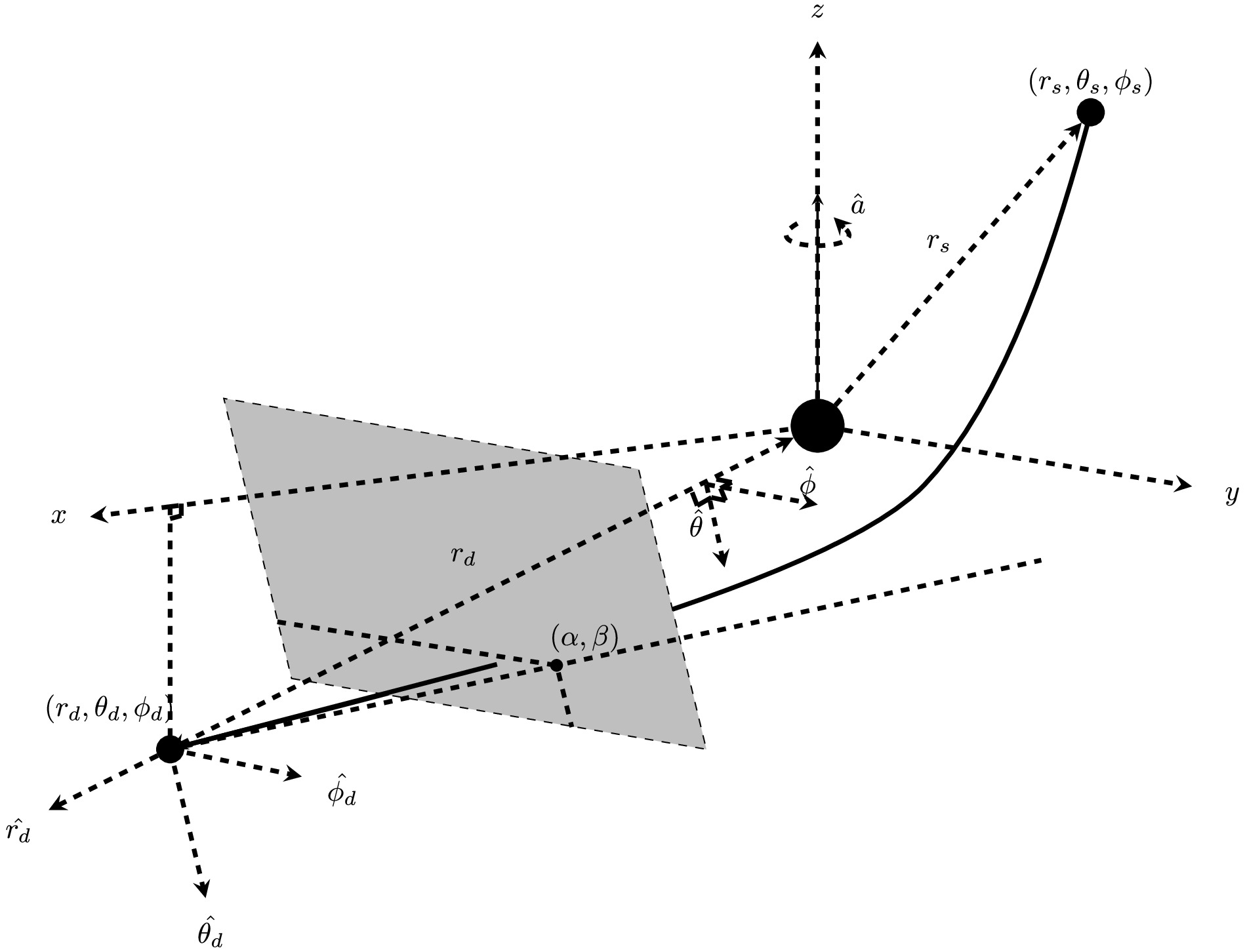
Figure 1. Schematic of the deflection and lensing in the WDL in Kerr BH spacetime. The source and detectors are located at
(rs,θs,ϕs) and(rd,θd,ϕd) , respectively. The gray box represents a patch of the celestial plane of the detector. The apparent angles of the images on this plane are also indicated.(α,β) are the small apparent angles of the image against the projected axis of+ˆz and+ˆy In this work, our set of the GL equation consists of two equations. The first set is simply the definitions of the deflections in the
ϕ andθ directions:Δϕ(r0,θe)=ϕd−ϕs≡π+δϕ,

(44a) Δθ(r0,θe)=θd+θs−π≡δθ,

(44b) where
Δϕ andΔθ are expressed as in Eqs. (30) and (38), andδϕ andδθ are two small deviation angles characterizing the location of the source relative to the lensing-observer axis when the lens is not present. We argue that this set of GL equations is more exact because unlike many others, they are simply definitions of the deflection, and their establishment requires no other geometrical approximations. Using this set of equations, when quantitiesa,M and(rs,θs,ϕs),(rd,θd,ϕd=2π) are given in advance, we can solve for the intermediate variables, i.e., minimal radial coordinater0 and extreme angleθe that enable the test particle to reach the detector. These two quantities can also be interchanged with the other pair of kinetic variables(L,E) of the test particle. Note that without loss of generality, we have fixedϕd=2π , and in the WDL,ϕd−ϕs is typicllat very close toπ .In practice, because Eqs. (30) and (38) have a more complicated dependence on
r0 andθe , when substituting into Eq. (44), we will use their expanded forms, i.e., Eqs. (33) and (40) with terms of combined order higher than two truncated. Inspecting these two equations carefully, we can observe that their dependence onr0 can be converted to a polynomial form. From Eqs. (34g) and (41g), we observe that the second order in the expansion of(M/r0) is also the minimal order that the effect of spacetime spinˆa will appear. Therefore, any attempt to study the off-equatorial plane deflection and lensing should retain the deflection angles to at least this order, which is also our approach in this work. Otherwise, the off-equatorial motion will simply be a simple rotation of the equatorial motion in Schwarzschild spacetime because spinˆa is not considered. However, for the dependence of this set of equations onθe , we observe that these two equations are both linear combinations ofsin(nxs) andcos(nxs)(n=0,1,2) , which can also be converted to polynomials oftan(x/2) . However, to the order we are interested in, these polynomials do not allow simple analytical forms for their solutions. More precisely, to include the effect ofˆa , we find thattan(x/2) should be a root of an order tenth-order polynomial. However, whentan(x/2) is obtained,r0 can be simply evaluated (not solved) from a polynomial involvingtan(x/2) . Therefore, in the following, we use the numerical methods to solver0 andtan(x/2) .In addition to these two equations, we provide a selection condition of the solutions related to the initial conditions. When
srθ>0 (or equivalentlysθ>0 because we always usesr>0 ), Eq. (9) implies that the trajectory initially moves toward decreasingθ ; therefore, we will require thatθe be smaller thanθs . In contrast, ifsrθ<0 , we will require thatθe>θs .In Figs. 2−5, we plot the solved
r0 andθe as functions of variablesδϕ,δθ,θs,ˆa , andrs,d using Sgr A* as the central lens. We utilize its dataM=4.1×106M⊙ andrd=8.34 kpc [6]. In principle, if we let the spacetime spin to be negative and the locations of the source and detector to be switched, then we can restrict the non-equivalent parameter space toδϕ>0,δθ>0,θs∈[0,π/2] . However, to show the lensed images more comprehensively, in some of the plots in the following, we will consider negativeδθ,δϕ . The choice of other parameters is provided in the caption of each plot.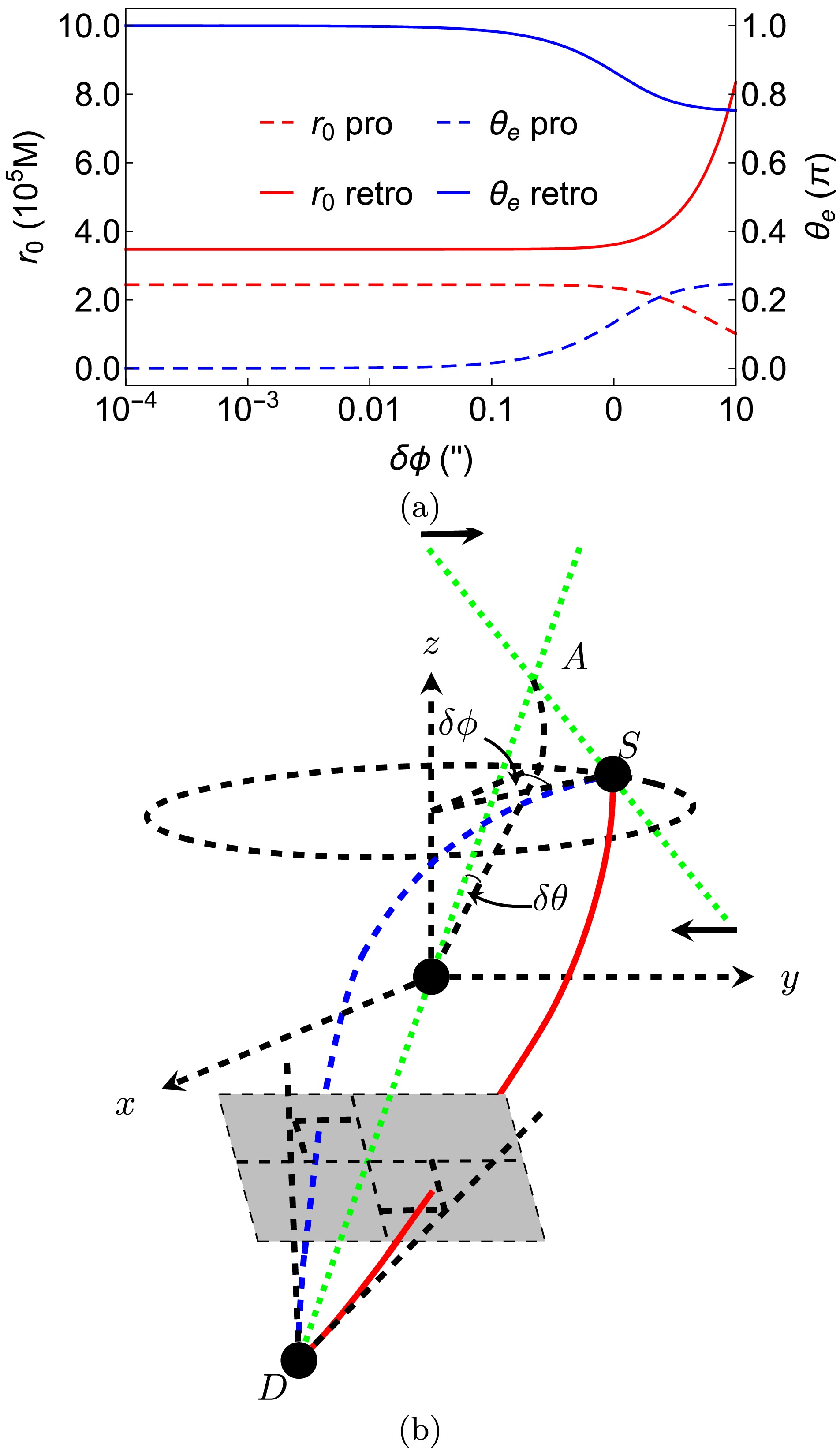
Figure 2. (color online) (a) Dependence of
r0 andθe onδϕ . We fixθs=π/4,δθ=1′′,ˆa=1/2,rs=rd,v=1 in this plot. (b) Decrease inδϕ .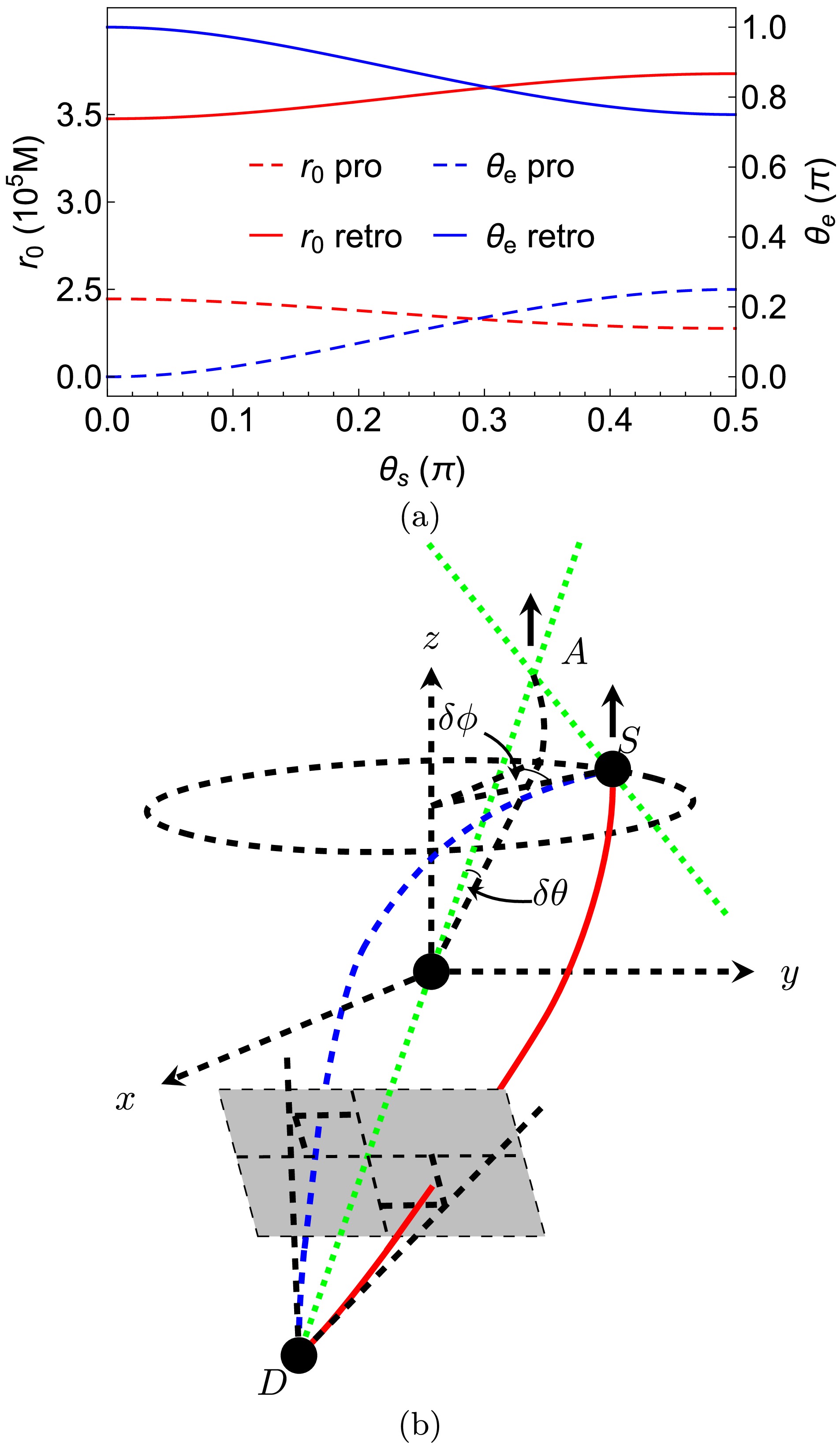
Figure 3. (color online) (a) Dependence of
r0 andθe onθs . We fixδϕ=1′′,δθ=1′′,ˆa=1/2,rs=rd,v=1 in this plot. (b) Change in the trajectories asθs decreases while keepingδθ andδϕ fixed.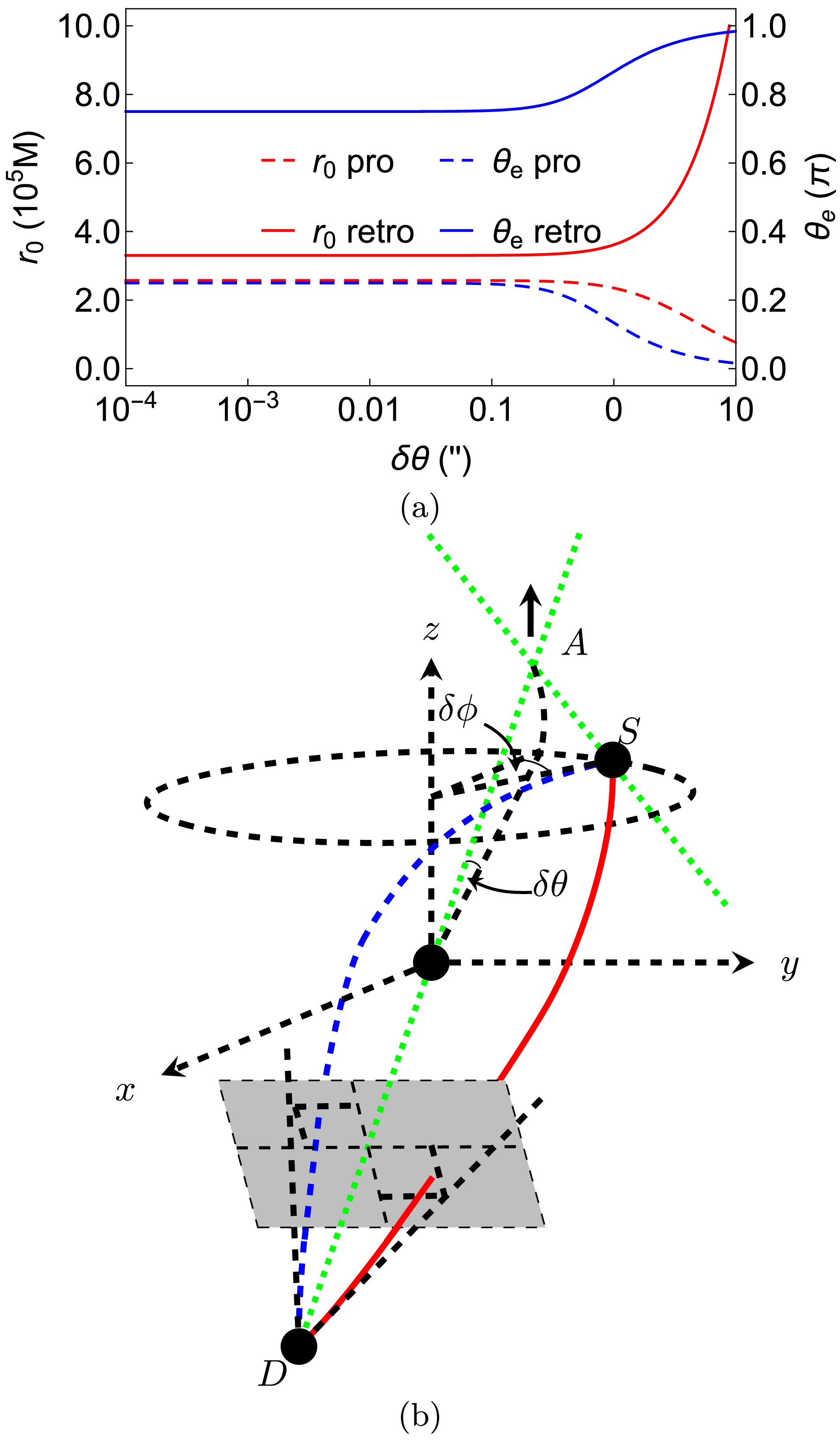
Figure 4. (color online) (a) Dependence of
r0 andθe onδθ . We fixδϕ=1′′,θs=π/4,ˆa=1/2,rs=rd,v=1 in this plot. (b) Variation inδθ .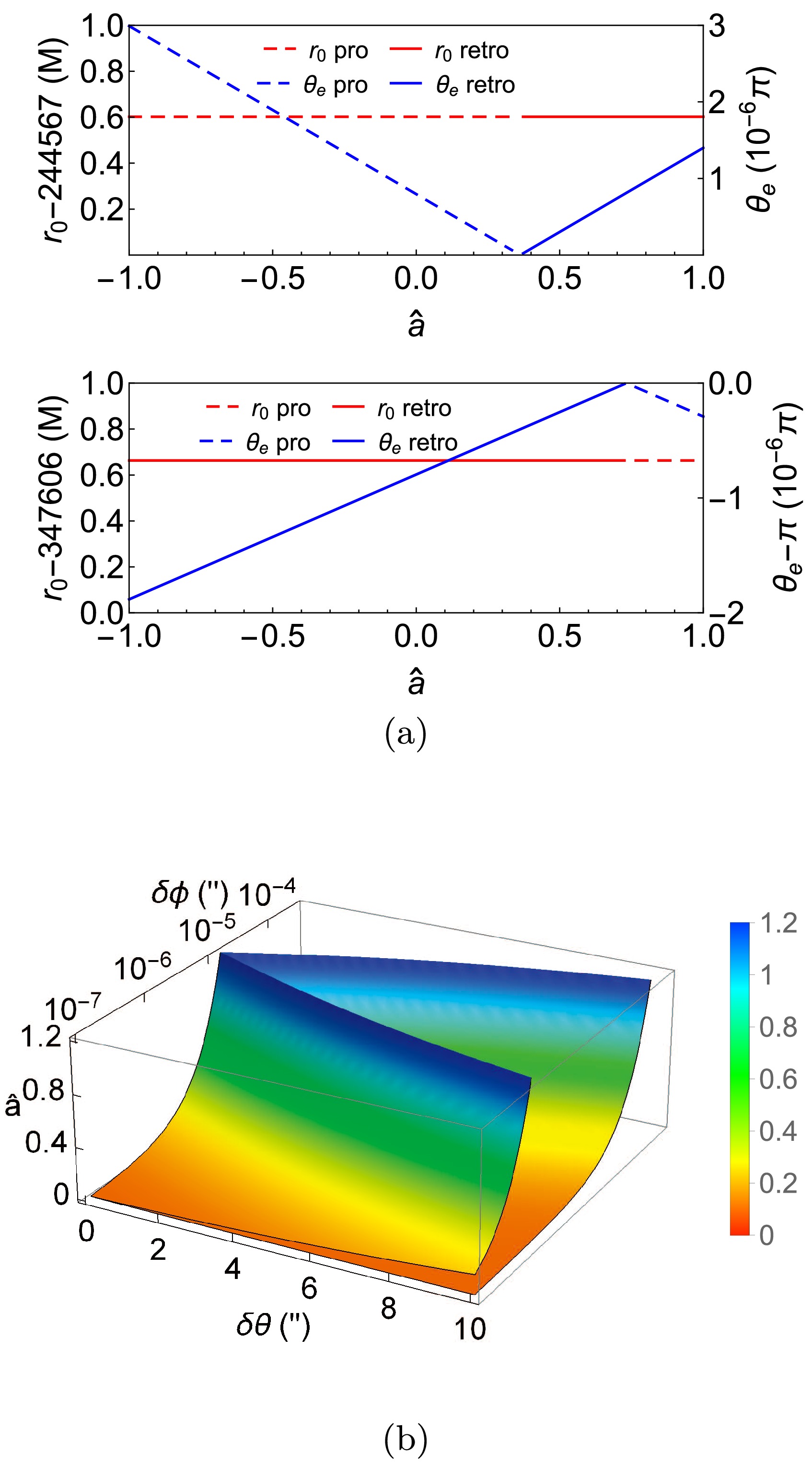
Figure 5. (color online) (a) Dependence of
r0 andθe± onˆa . We fixδθ=1′′,δϕ=5∗10−6′′,θs=π/4,rs=rd,v=1 . (b) The criticalˆac± . We fixθs=π/4,rs=rd,v=1 in this plot.Let us indicate a few features of the solution process and results. First, we observe that for each set of parameters and among the four different possible combinations of signs
srθ andsl , only two combinations allow physical solutions tor0 andθe . In most of the parameter space, one of these allowed trajectories will be prograde with respect to the+z axis, whereas the other will be retrograde. In this paper, by prograde and retrograde, we specifically mean that the trajectories rotate anticlockwise and clockwise around the+ˆz directions, respectively. No retrolensing is involved because we discuss only the weak deflection cases in this work. We denote the minimal radii and extremeθ coordinate of the prograde trajectory as(r0+,θe+) and those of the retrograde trajectory as(r0−,θe−) . Becauseθs≤π/2 , whenθe is a minimum (or maximum), the trajectory reaches the detector from above (or below) the equatorial plane after bending, as indicated in Fig. 1 by the two solid trajectories.Second, we would like to indicate two fundamental properties of the trajectories that will aid in the understanding of the results presented in many of the following figures. The first is that when
δϕ is relatively large (greater than10−4′′ ) for the numerical values of other parameters we have used, the spacetime spin's effect is only secondary compared with that ofδϕ . This can be understood from Eqs. (44a) and (30) thatˆa appears one order higher thanδϕ or from the deflection angle thatˆa appears one order higher thanM/r0 . Under these parameter settings, the effect of the spin can be ignored and the physics should be similar to the SSS case, in which the total deflection angle can be approximated asδη≈√(δθ)2+sin2θs(δϕ)2.

(45) Subsequently, from our experience with SSS spacetime, we know that when
δϕ>0 , the minimal radial coordinater0+ will decrease, whereasr0− will increase asδη increases, as in Schwarzschild spacetime [47], regardless of whether the increase inδη is caused by the increase inδϕ,θs , orδθ . When the effect ofˆa is secondary, the second feature of the trajectories is that both trajectories lie essentially within a single plane that contains the source, lens, and detector. With these two fundamental properties in mind, we can then study and more easily understand the effect of various quantities on the extremeθe± by simply drawing this plane in the Cartesian coordinates.Effect of various parameters
Figure 2 shows the dependence of
r0± andθe± onδϕ . This relationship is one of the main focuses of the GL in SSS or equatorial plane of stationary and axisymmetric spacetimes. As described earlier, each set of fixed parameters has only two physical trajectories, which we denote as(r0+,θe+) for the prograde one and(r0−,θe−) for the retrograde one. For the minimal radii, Fig. 2(a) (left axis) shows that, if deflectionδϕ is larger than the deflection in theθ direction (δθ=1′′ ), its effect on the bending of the trajectories would dominate those of the spacetime spin as well asδθ , as can be observed from its contribution to total deflectionδη in Eq. (45). Asδϕ decreases,r0− would rapidly decrease andr0+ would increase, which is a feature qualitatively similar to the case in the equatorial plane [17]. However, asδϕ approaches and becomes smaller thanδθ , the effect ofδθ to the bending will fix the two minimal radii at constant values, as shown by the flat regions in the left part of Fig. 2 (a). For the extremeθe of the two trajectories, Fig. 2 (b) (right axis) shows that asδϕ decreases,θe+ (orθe− ) of the prograde (or retrograde) trajectory continues decreasing (or increasing), indicating that the trajectory swings closer to thez axis above (or below) the equatorial plane. Asδϕ becomes much smaller thanδθ , the trajectories primarily bend in theθ direction, andθe+ andθe− approachπ and0 indefinitely. We remind the readers that theθ coordinate along the trajectory does not necessarily deviate weakly fromθs,d even in the WDL, which can be understood in the straight trajectory case in zero gravity. Figure 2 (b) depicts schematically the change of the trajectories asδϕ decreases.Figure 3 shows the effect of
θs onr0± andθe± . Note when adjustingθs , we keepδθ=1′′=δϕ a small constant such thatθd is simultaneously adjusted. First, we observe that, compared with the effect ofδϕ on these quantities, that ofθs is much weaker in general: a change inθs of aboutπ/2 causes approximately the same amount of change inθe± and a smaller change inr0± than those by a change inδϕ of10′′ . However, this is expected both from Eq. (45) and the fact that the approximate alignment of the source-lens-detector is not changed dramatically asθs varies. The second feature is that the effects ofθs on bothr0± andθe± become stronger asθs decreases to zero, i.e., thez axis pole directions, and weaker as it moves towardπ/2 , i.e., the equatorial plane. This is consistent with the first-order terms of Eq. (40), i.e., Eqs. (41b) and (41d), which are proportional tocos(xs) approaching0 asθs approaches the equatorial plane, and can also be observed by differentiating Eq. (45) with respect toθs .For the effect of
θs onr0± , Fig. 3 (a) (left axis) shows that when the source and detectors are closer to the poles, the minimal radial coordinater0+ (andr0− ) for prograde (and retrograde) motion decreases (and increases) slightly. From our experience [47] with Schwarzschild spacetime with deflectionδη as given in Eq. (45), we can easily anticipate that the two minimal radii should basically assume the shape shown in Fig. 3 (a) asθs varies. Forθe± , Fig. 3 (a) (right axis) shows that more polar source and detector locations yield more polarθe± . This can be understood from the second property we mentioned above that each trajectory lies basically in one plane containing the source, lens, and detector. We can show by plotting this plane in the Cartesian coordinates that the closerθs is to the+z -axis, the closerθe± is to the poles. The change caused by the variation inθs is schematically shown in Fig. 3 (b).The effect of
δθ onr0± andθe± , as shown in Fig. 4, is related to the effects ofθs in Fig. 3 andδϕ in Fig. 2 through the combination of these three parameters into the total deflection, as in Eq. (45). From Fig. 4 (a) (left axis), we observe that asδθ increases to about10′′ ,r0+ for the prograde trajectory increases andr0− for the retrograde trajectory decreases. However, the amount of their changes is larger than those in Fig. 2 (a) because of the additional factor ofsin2θs=1/2 in Eq. (45). The difference between the effects ofδθ andδϕ appears in their effects onθe± . An increase inδθ with a fixedθs means an increase inθd . Therefore, for an increasingδθ but a fixedδϕ , we observe that the plane containing the source, lens, detector and the two trajectories will be tilted more vertically towards thez axis. Whenδϕ>0 , this effectively increasesθe− and decreasesθe+ , as observed in Fig. 4 (a) (right axis). The variation in the trajectories with the increase inδθ is schematically shown in Fig. 4 (b).Finally, we plot the effect of spacetime spin
ˆa onr0± andθe± in Fig. 5. As mentioned earlier, we observe that when total deflectionδη is larger than a certain value (∼10−5′′ ), the effect ofˆa on these quantities is weak such that no noticeable changes are observed in these plots. Therefore, in these figures, we decreaseδϕ andδθ simultaneously from10−5′′ to about10−7′′ . As the deflections decrease, the influence ofˆa begins to appear.One of the most remarkable characteristics that we observe in Fig. 5 (a) is that when
δϕ is small, a transition exists between trajectories with different choices of(srθ,sl) whenˆa passes some critical values. Whenδϕ becomes sub-∼10−5′′ , the solution with(srθ=+1,sl=+1) ceases to exist whenˆa is larger thanˆac+ and that with(srθ=−1,sl=−1) ceases to exist whenˆa is larger than another critical valueˆac− . Instead, the above two solutions switch their sign choices to(srθ=+1,sl=−1) and(srθ=−1,sl=+1) , respectively. This means that forδϕ>0,δθ>0 andθs<π/2 , the test particle reaching the detector from bending above (or below) the equatorial plane switches from prograde to retrograde (or vice versa). In other words, the two trajectories intersect with thez axis atˆa=ˆac+ andˆa=ˆac− , respectively; therefore,θe±=0,π as confirmed in Fig. 5 (a).This observation effectively provides us with the following criterion to solve for
ˆac± :θe=0orπ . Substituting this into the lensing Eq. (44), we can solve for criticalˆac± to the leading order, as a function ofδθ,δϕ and spacetime parameters. In Fig. 5 (b), we plot the exact dependence ofˆac± onδθ andδϕ while maintaining other parameters such asθs,rs,d . We observe that the smaller theδϕ , the smaller the transition spins|ˆac±| , indicating that this switching of the signs is primarily a spacetime spin effect. Moreover, if the spacetime is a BH one (|ˆa|≤1 ), then only for smallδϕ does a criticalˆac± exist. Forˆa below (or above) these two surfaces, the trajectories as shown in Figs. 3−4 with signs(srθ=+1,sl=+1) and(srθ=−1,sl=−1) (or(srθ=+1,sl=−1) and(srθ=−1,sl=+1) ) are the physical solutions, respectively.A few other characteristics are worth remarking upon for these transitions. First, this plot shows that the transitions depend on
δθ much more weakly than onδϕ . This is understandable becauseˆa is along the direction around which theϕ coordinate evolves but not along the direction of theθ coordinate. This is also consistent with our knowledge about the deflections in the equatorial plane, where the effect of spinˆa is most apparent only whenδϕ is very small [14]. Second, we also note that whenδϕ is small and fixed, the spin effect is stronger for a largerδθ in that the correspondingˆac is smaller. Third, these transitions can also be considered as caused by the variation inδθ orδϕ when other parameters are fixed. In other words, if we fix a constantˆa , then for eachδθ , a criticalδϕ exists, below which the sign choice for(srθ,sl) would be(+,−) and(−,+) . Finally, some ranges ofδθ andδϕ exist in whichˆac± can exceed the extreme Kerr BH limit of 1. Therefore, for these deflection angles, the transition will not occur if we consider only the BH spacetime case. However, even for the Kerr spacetime with a naked singularity (theˆa>1 part in this plot), we emphasize that the criticalˆac± still exists and our plot is still valid.For
r0± , it was previously known that in the equatorial plane, an increase inˆa will decreaser0+ and increaser0− [14]. We observe from the magnified figure that this trend is qualitatively unchanged in the off-equatorial plane case, and it will be more apparent for very smallδθ andδϕ (e.g.,∼10−7′′ ). Although the influence ofˆa onθe± appears weak, it is more interesting than its effect onr0± . -
Apparent angles
When
(r0,θe) or(L,E) are solved for a given set of smallδθ andδϕ , previously, based on some approximate geometrical relations, Refs. [35, 37] developed approximate formulas for the apparent angles of the images observed by a static observer at(rd,θd,ϕd) . However, here, we use the following exact definition of the apparent angles derived from the projection of the test particle trajectory onto the celestrial sphere of the observer (see Fig. 1 for the meaning of these small angles):α=sin−1L(Δd−a2s2d)+2aMErds2dsd√ΔdΣd(E2Σd−m2(Δd−a2s2d)),

(46a) β=sin−1srθ√Θ(cd)(Δd−a2s2d)sd√Σd[E2Σd−m2(Δd−a2s2d)].

(46b) Substituting
(Θ(cd),L,E) into Eqs. (7), (15), (16) and further expanding as series ofM/r0 andr0/rd) , they can be transformed toα±=slsin(xd±){r0rd+Mrdv2−Mr0r2dv2+12r0rd[a2−4slse±aMv+M2v4(4v2−1)]+r30sin2(xd±)6r3d},

(47a) β±=srθcos(xd±){r0rd+Mrdv2−Mr0r2dv2+12r0rd[c2d±a2−4slse±aMv+M2v4(4v2−1)]+r30cos2(xd±)6rd3}

(47b) where we recall that
xd±=sin−1(se±sd±)=sin−1(sin(θe±)sin(θd(r0±,θe±))).

(48) For the derivation of these formulas, see Appendix C. Note that
r0± andθe± enter these apparent angles through angular momentumL and Carter constantK , which appears inΘ(cd) . These formulas have the advantage that they are applicable regardless of whether the test particle is bent weakly or strongly, although we focus only on the former case in this work. We have also verified for the weak deflection and equatorial plane limit thatβ approaches0 andα yields the corresponding results in Ref. [17] (after switching from impact parameter tor0 ). Moreover, if we are interested in a single apparent angleγ between the test particle and the direction of the Kerr BH, this is given by Eq. (C12).γ±=cos−1{[(aL±−(a2+r2d)E)2−(K±+m2r2d)Δd]Δd±Σd±[E2Σd±−m2(Δd±−a2s2d±)]×(Δd±−a2s2d±)}1/2.

(49) To reveal the dependence of the image positions on parameters
δϕ,θs,δθ , andˆa , in Fig. 6, we plot angular locations(α±,β±) using Eq. (47) of the prograde and retrograde images formed by trajectories with(r0±,θe±) in the celestial plane shown in Fig. 1. Note that if the lens were absent, it would be straightforward to determine that the source would appear to be at the point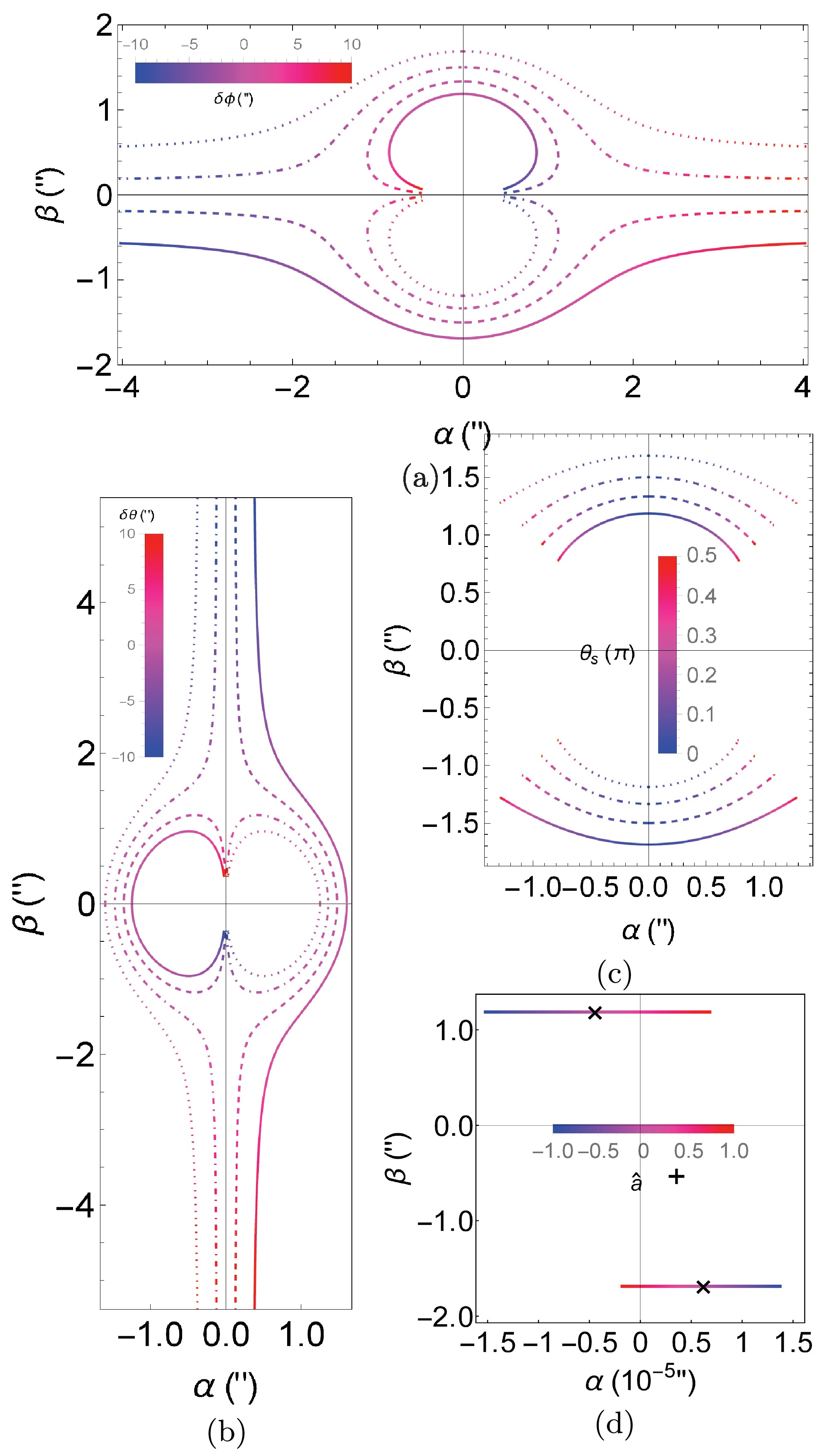
Figure 6. (color online) Dependence of apparent angles
(α,β) on (a)δϕ from−10′′ to10′′ , (b)δθ from−10′′ to10′′ , (c)θs from0.01π toπ/2 , andˆa from -1 to 1 in (d) forδϕ=5×10−6′′ andδθ=1′′ . The different line types in (a), (b), (c) are for different values ofδθ,δϕ andδθ=δϕ . The solid, dashed, dot-dashed, and dotted lines represent1′′,0.33′′,−0.33′′,−1′′ respectively. The default values of parameters in each subplot, except those varied, areδθ=1′′,δϕ=1′′,ˆa=1/2,rs=rd,v=1 .(α,β)=(rssinθsδϕrs+rd,−rsδθrs+rd)

(50) on the celestial plane of the observer.
In Fig. 6 (a), we continuously vary the
ϕ coordinate and consequentlyδϕ of the source while keepingθs andˆa fixed and show the tracks of the images for several discreteδθ . The value ofδϕ is color-coded for the left side of the tracks to correspond toδθ=−10′′ and the right side toδθ=10′′ . For each fixed set of parameters in the selected parameter range, two conjugate images distributed in opposite quadrants always appear, on the same straight line passing the origin. Forˆa=1/2>0 andδθ>0 , the image pairs in the first and third (or the fourth and second) quadrants are whenδϕ<0 (orδϕ>0 ) and correspond to retrograde and prograde test particles, respectively. Forˆa=1/2>0 andδθ<0 , the opposite occurs. In each pair of images, the one on the outer curves, i.e., the curves further away from the origin, has a larger minimal radial coordinate and the one on the inner circular curves has a smallerr0 . For the selected parameter ranges ofδθ andδϕ , because the effect ofˆa is not apparent (see Fig. 5), the lens images appear almost symmetric forδθ orδϕ with opposite signs.Among each pair of the images, we observe that for each fixed
δθ , with decreasingδϕ , theα -coordinate of the far-side image increases monotonically. Again, the reason is simply that the variation in theϕ coordinate of the source is parallel to theα axis in the celestial plane. The qualitative characteristics of the angular locations of the inner images are more interesting. Whenδϕ increases to large values, although theβ coordinates of the outer images do not approach zero, those of the inner images do. When|δϕ| decreases from large values, theα coordinates of the inner images do not decrease monotonically but initially increase to a maximal value and then decrease, indicating that the effect ofδϕ begins to dominate the image locations. This last feature corresponds with Fig. 2 (c).Figure 6 (b) shows the dependence of the image locations on
δθ for a few fixedδϕ . Qualitatively, this figure resembles a rotation of Fig. 6 (a), indicating that the role ofδϕ in Fig. 6 (a) is now played byδθ . An apparent difference is that the range ofβ in Fig. 6 (b) is about1.4≈√2=1/sinθs times that ofα angle in Fig. 6 (a). This is a reflection of thesinθs factor in the contribution ofδθ andδϕ to the total deflection in Eq. (45).In Fig. 6 (c), we illustrate the effect of
θs on the image location while fixingδϕ=δθ=1′′ . We observe that whenθs approaches the spacetime rotation axis, both images are shifted very close to theα axis, which is consistent with the fact that bothθe± approach theˆz axis in Fig. 3 (b). However, whenθs converts toπ/2 , the images do not approach zeroβ but rather a finiteβ that is smaller thanδθ . This also corresponds with the observation from Fig. 3 (b) thatθe± approaches only some middle values not close to either 0 orπ/2 . The more fundamental reason for these phenomena is simply thatδθ is still non-zero in this case, i.e., the detector is still below the equatorial plane. Generally, the apparent angleγ±≈√α2±+β2± in this figure does not change significantly asθs varies, because the total effective deflection given by Eq. (45) does not change by a large factor.For the ranges of parameters considered in Fig. 6 (a)−(c), we can easily verify that the critical scenario in which the effect of
ˆa becomes significant is never reached. Therefore, for these parameter ranges, in principle, we expect that the apparent angles can be well approximated by the results in Schwarzschild spacetime. When the source is located on the equatorial plane, the apparent angles against the lens-detector axis to the leading order are [22]αS,±=rs√δθ2+sin2θsδϕ22(rs+rd)(sgn(δϕ)∓ζ),

(51) where
ζ=√1+8M(rd+rs)(1+1v2)rdrs(δθ2+sin2θsδϕ2).

(52) Here, we replaced
δϕ in the Schwarzschild spacetime with the total deflectionδη in the Kerr spacetime, i.e., Eq. (45). However, because the source now is not located on the equatorial plane, these images should be rotated on the celestial plane such that the trajectories are in the same plane as the source, lens, and detector. The location of the source with the absence of the lens in Eq. (50) provides for the two images rotation angleξ from the+ˆα axis on the celestial plane, i.e.,cosξ=sinθsδϕ/δη,andsinξ=−δθ/δη.

(53) Applying the above rotation to the apparent angles in Eq. (51), we finally determine the apparent angles
(α±,β±) for sources in Kerr spacetimes with a smallˆa asα±=sinθsδϕrs2(rs+rd)(1∓sgn(δϕ)ζ),

(54) β±=−δθrs2(rs+rd)(1∓sgn(δϕ)ζ),

(55) where
ζ is in Eq. (52). We replot image locations(α±,β±) using the equations provided above for parameters given in the caption of Fig. 6 (a)−(c) and observe excellent agreement with these figures. Moreover, these formulas can be used to explain the relevant results in Ref. [48].Figure 6 (d) shows the effect of
ˆa on the apparent angles of the images. We intentionally select a small but positiveδϕ forˆa to pass the criticalˆac discussed in Fig. 5 as it varies from−1 to 1. The two black crosses mark the images forˆa=0 , and the plus sign marks the location of the source if the lens were absent. The most interesting characteristic in these plots, and in contrast to the cases in (a)−(c) where the effect ofˆa is not evident or equivalently the Schwarzschild case, is that asˆa increases from zero, the retrograde (or prograde) trajectories begin to approach the+ˆz axis (or the−ˆz axis), and the corresponding image begins to approach theˆβ axis from the left (or right). Whenˆa passesˆac+ , the retrograde trajectory intersects theˆz axis first and then its image appears on the right side of theˆβ axis. In other words, untilˆa reachesˆac− , two prograde trajectories and images withα>0 occur. Eventually, whenˆa passesˆac− , the initially retrograde trajectory passes the−ˆz axis and yields the image on the left side of theˆβ axis. There will be one image from the prograde trajectory and one image from the retrograde trajectory again.Magnifications
The magnification of the images is defined as the ratio between the observed image angular size to the source angular size if the lens is absent:
μ±=dΩidΩ′i=(rd+rs)2r2ssinθd±J±=(rd+rs)2r2ssinθd|∂α±∂(δθ)∂α±∂(δϕ)∂β±∂(δθ)∂β±∂(δϕ)|,

(56) where
J± is the Jacobian of the transformation from variables(δθ,δϕ) to(α±,β±) . This agrees with Ref. [49], which considered the (quasi-)equatorial plane case.Using Eqs. (46a) and (46b),
(α±,β±) are related to(L,Θ) , which according to Eqs. (7) and then (15) and (16), are functions of(r0±,θe±) . These quantities can be finally connected toδθ andδϕ through solutions ofθe± andr0± . Therefore, using the chain rule for the partial derivatives, each element in the Jacobian can be computed as∂α∂(δy)=dαdL(∂L∂r0∂r0∂(δy)+∂L∂θe∂θe∂(δy)),y∈{θ,ϕ},

(57a) ∂β∂(δy)=dβ dΘ[(∂Θ∂L+∂Θ∂K∂K∂L)(∂L∂r0∂r0∂(δy)+∂L∂θe∂θe∂(δy))+∂Θ∂K∂K∂θe∂θe∂(δy)],

(57b) where
y can be eitherθ orϕ . Substitutingr0± andθe± for each image into the above equation, we can immediately obtain the magnifications of the two images. We denote the magnification for the prograde image asμ+ and for the retrograde image asμ− .When
δθ is large such that the effect ofˆa is weak, then this magnification can be simplified to that of a Schwarzschild spacetimeμ±=u2+22u√u2+4∓sgn(δϕ)12,

(58) u=√rd(rs+rd)(δθ2+sin2θsδϕ2)2Mrs(1+1v2)

(59) and the total deflection
δη in Eq. (45) has replaced the corresponding deflectionδϕ in the Schwarzschild spacetime. From this, the effects of parametersδϕ,δθ,θs are very apparent.In Fig. 7, we show the dependence of the magnification on the parameters
δϕ,δθ . We observe from Fig. 7 (a) that the magnificationsμ± for both images decrease as any ofδϕ andδθ increases. Moreover, the magnificationμ+ of the prograde image decreases to zero, whereasμ− of the retrograde image decreases to1 , which are the asymptotic values of Eq. (58). From Fig. 7 (b), we observe that when bothδϕ andδθ are small, both magnificationsμ± become very large, a characteristic qualitatively similar to the magnifications of lensed images in SSS spacetime but with the total deflection angleδη in (45) playing the role of the deflection in SSS spacetime [22]. However, we observe from the peak in Fig. 7 that the value of(δθ,δϕ) for which the magnifications diverge fastest do not occur whenδθ→0 . This can be attributed to the effect of the spacetime spin.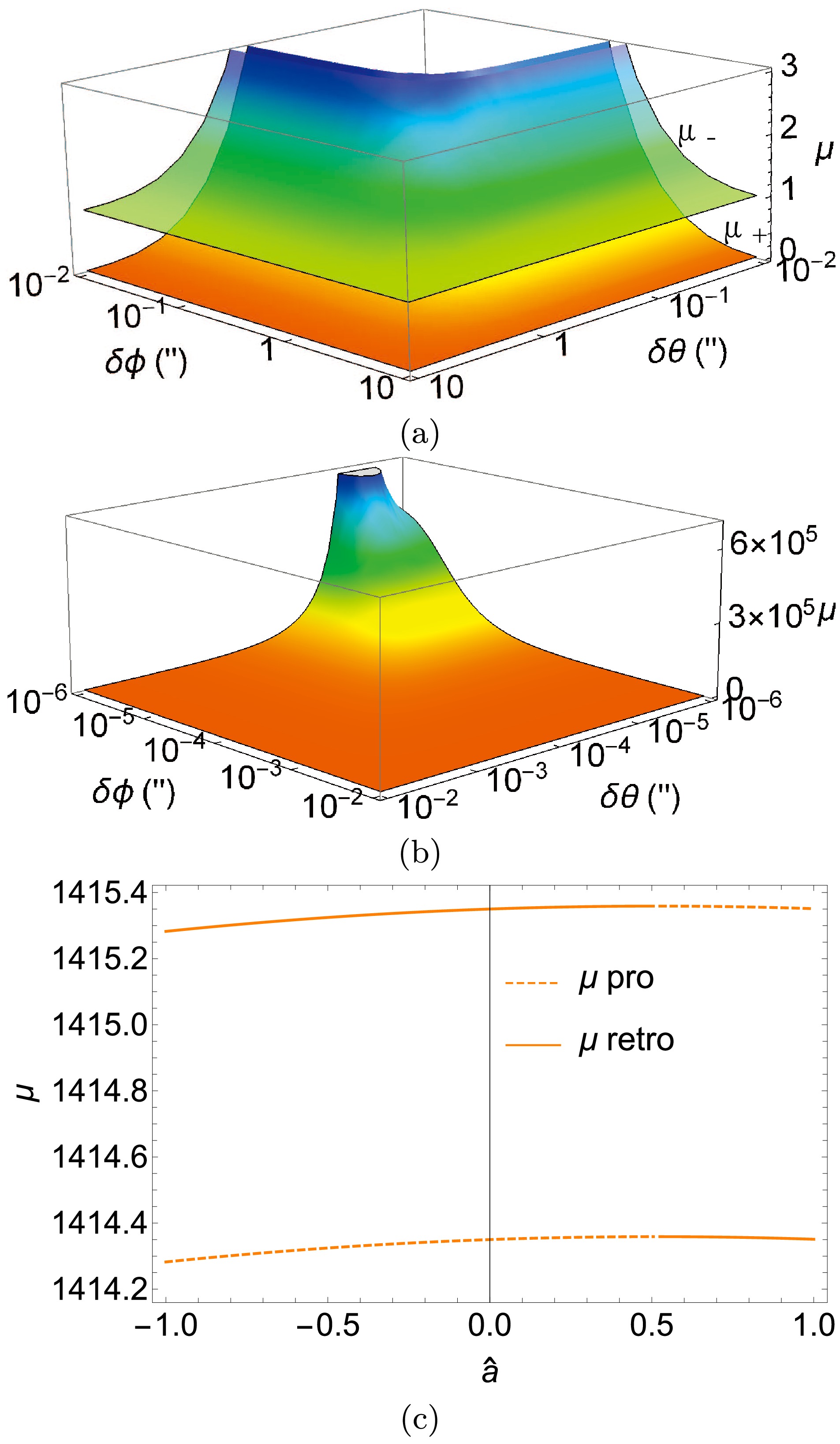
Figure 7. (color online) Dependence of the magnification on
δϕ andδθ (a) and (b) and onˆa (c). We fixˆa=1/2 in plots (a) and (b) andδϕ=5×10−6′′,δθ=10−3′′ in (c). Other parameters areθs=π/4,rs=rd,v=1 .In Fig. 7 (c), we show the effect of
ˆa on magnification is shown. A smallδϕ is selected for the effect ofˆa to be apparent. Generally, for a positiveδϕ ,μ± increases with the increase inˆa up to approximately the critical valuesˆac± . Thereafter, the magnification decreases. The magnification aroundˆac± being maximal for each trajectory can be qualitatively understood from the fact that the trajectory is often closer to the lens than otherˆa around this spin. -
To determine the time delay between the two lensed images, we must first compute total travel time
Δt along the two trajectories. This can be performed completely in parallel to the computation of deflection angleΔϕ in Secs. II and III. Because the computation and presentation therein are quite lengthy, we will address the total travel time and time delay separately here.Starting from Eq. (5d), and using Eqs. (5a) and (9) in the first and last terms in the right-hand side of this equation, respectively, it becomes
dt=E(r2+a2)2−2aLMrΔsrdr√R(r)−Ea2(1−cos2θ)sθdcosθ√Θ(cosθ).

(60) The procedure to compute perturbative
Δt is then the same as that from Eqs. (10) to (30) forΔϕ . The result isΔt=∑j=s,d∞∑i=−1Hr,i(pj)(Mr0)i+∞∑i=1H′θ,i(cs,ce)(Mr0)i,

(61) where
Hr,i andH′θ,i are analogous toGr,i andG′θ,i in Eq. (26e)−(26d). Their first few orders areHr,−1=M√1−p2jpjv,

(62a) Hr,0=Mv3[(3v2−1)tanh−1(√1−p2j)+√1−p2jpj+1],

(62b) Hr,1=M[15−a2(c2e−2)]cos−1(pj)2v+M√1−pj2(pj+1)3/2v5{−6(pj+1)v2+pj+2−4slsea(pj+1)v3[(pj+1)v2+1]},

(62c) H′θ,1=a22v{−srθ(c2e−2)[sin−1(csce)−a1]−12srθc2esin(2a1)+srθcs√c2e−c2s+π(c2e−2)(1−srθ)},

(62d) where
pj,a1 are given in Eqs. (18) and (29a), respectively.The null limit of
Δt can be obtained easily by takingv=1 in the above equation:Δt(v→1)=∑j=s,d{√1−p2jr0pj+M[2tanh−1(√1−p2j)+√1−p2jpj+1]+[M2[15−ˆa2(c2e−2)]cos−1(pj)−M√1−pj2(pj+1)3/2[5pj+4+4slˆase(pj+1)(pj+2)]](Mr0)}+ˆa22{−srθ(c2e−2)[sin−1(csce)−a1]−srθ2c2esin(2a1)+srθcs√c2e−c2s+π(c2e−2)(1−srθ)}(Mr0).

(63) We have also checked that
Δt in Eq. (61) can reduce to its equatorial plane form computed from Eq. (53) of Ref. [14] if we letθs→π/2,θe→π/2 .The
Δt above can be further expanded in the smallps,d limit. The result to the first few orders is determined to beΔt=n+m1+m2=2∑n,m1=−1,m2=m1κn,m1,m2(Mr0)n×(pm1spm2d+pm1dpm2s)+O(ε3),

(64) where the coefficients are
κ−1,−1,0=Mv,

(65a) κ−1,0,1=−M2v,

(65b) κ0,0,0=M2v3{2+v2ln(64)+∑i=s,d[ln(pi2)−3v2ln(pi)]},

(65c) κ0,0,1=−Mv3,

(65d) κ0,0,2=−3M(−1+v2)4v3,

(65e) κ1,0,0=M4v5{[15πv2−12−8slˆasev(1+v2)]v2+4},

(65f) κ1,0,1=M2v5{[(4slˆase−15v+ˆa2v(c2e−2c2s))v+6]v2−3},

(65g) κ2,0,0=M4v7{−2+6v2+v4[46−15π+70v2+2ˆa2(2+2c2s−3c2e(1+v2)−4c2ev2)−2slseˆav(−16+3π(4+v2))]}.

(65h) This
Δt is a function ofr0 andθe . Therefore, when these two quantities, as well as other parameters determining them, are known for a given trajectory, the correspondingΔt will be fixed. For the two images formed from the same source but with differentr0± andθe± , time delayΔ2t±≡Δt+−Δt− can be derived through straightforward deduction. Using Eq. (64), we determineΔ2t± to the leading three orders asΔ2t±=−(r0+2−r0−2)(rd+rs)2rdrsv+2M(1−3v2)v3ln(r0+r0−)−M22r0+r0−v5[(15πv4−12v2+4)(r0+−r0−)

−8ˆa(v2+1)v3(r0+se−+r0−se+)]−M(r0+−r0−)(rd+rs)rdrsv3.

(66) We observe that the dominant term (Eqs. (65a)) in Eq. (64) does not contribute to the time delay because it is the time corresponding to the straight line approximation and is the same for both trajectories. The terms retained in this analysis originate from Eqs. (65b), (65c), (65f), and (65d). The effects of spacetime spin and non-equatorial effects are present in the terms from Eq. (65f).
In Fig. 8, we plot the dependence of the time delay
Δ2t± onˆa for a source withδϕ=4′′ andδθ=1′′ , and the lens is still assumed to be Sgr A*. Becauseδϕ is very small, as indicated in Fig. 5 and revealed in Ref. [14], the spinˆa is expected to have a significant impact on the time delay. Thus, asˆa varies from−1 to 1, the time delay changes from approximately0.025 s to0.83 s. The time delay reaches its minimum value at approximatelyˆa=0.11 , which is close to the critical valueˆac± . In other regions, the time delay varies with approximately a constant size but appreciable slope. -
In this section, we discuss a few problems that our results can be used to study.
-
We first study the images of a source moving in the equatorial plane behind the lens. Such sources can include stars or other transits whose orbit (almost) intersect with the observer-lens axis and whose angular velocity is appreciable to make the observation of the motion possible, e.g., some S stars around Sgr A*.
In Fig. 9, we assume that the source is located at a representative radial distance of the S star orbits and plot the location of the GL image of this source as it moves across. Because we are working within a WDL, the section of the trajectory that we can treat appears almost a straight line if no lens exists. We assume that this straight line satisfies the parametric relation
δϕ=δ0+δθ whereδ0 takes on a few values of10−5′′,10−3′′,10−1′′ andδθ runs from−10′′ to10′′ in Fig. 9 to compute the corresponding image locations.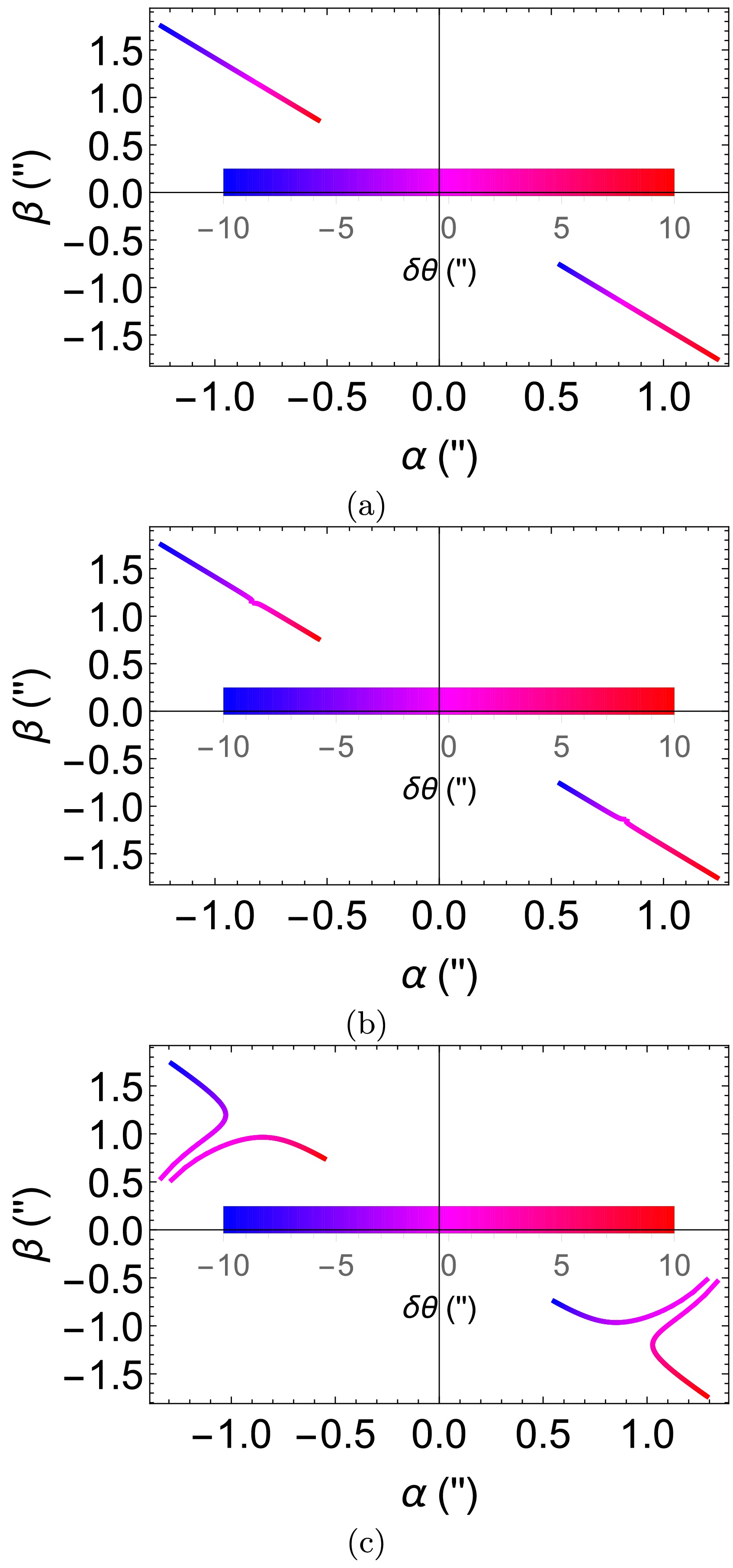
Figure 9. (color online) Dependence of the apparent image and magnification on moving sources, where
δϕ=δ0+δθ andδθ from−10′′ to10′′ . We fixˆa=1/2,θs=π4,rs=rd,v=1 andδ0=10−5′′ (a),δ0=10−3′′ (b),δ0=10−1′′ (c).When
δ0 is relatively small, i.e., for theδ0=10−3′′,10−5′′ cases, the images of a source moving along a straight line in the backend also form two straight tracks on the celestial sphere. This indicates that in this parameter setting, the effect of the spacetime spin is not important in determining the apparent angles of the images. However, whenδ0 is larger (i.e.,10−1′′ ), the image tracks deviate from straight lines at some point ofδθ orδϕ . This is indeed the value ofδθ andδϕ such that the criticalac=1/2 , which is the value we set for the spacetime spin when plotting this figure. This sharp derivation from straight lines of the tracks can be used as a characteristic observable ofac . -
Among possible sources lensed by a Kerr BH, stars or other spherical shape objects are very natural candidates. If the source and/or the lens are small and too far from us such sthat the shape of the images are not resolvable, then only the central values of the apparent angles
(α,β) might be obtained. However, when the source is large or close and the detector has sufficient resolution, the shape of the source should also be recognizable. Thus, in an SSS spacetime, we would expect that the images of a spherical source will generally appear elongated.In the Kerr spacetime, if
δθ andδϕ are sufficiently large that the effect ofˆa is much weaker on the trajectory deflection, then naturally we would expect that the shape of the images will be similar to those in the Schwarzschild spacetime withδη in Eq. (45) playing the role of the source's deflection. In this case, we can determine the shape of the images based on the apparent angle formula (51) in the Schwarzschild spacetime. If the radial coordinate of the source object isR , whereR/rs≪δη (see Fig. 10), and denoting the polar angle of a boundary point of the source asσ in a polar frame with the center of the source at the origin, then to this leading order ofR/rs , the total deflection angle of this boundary point with respect to the Schwarzschild lens becomes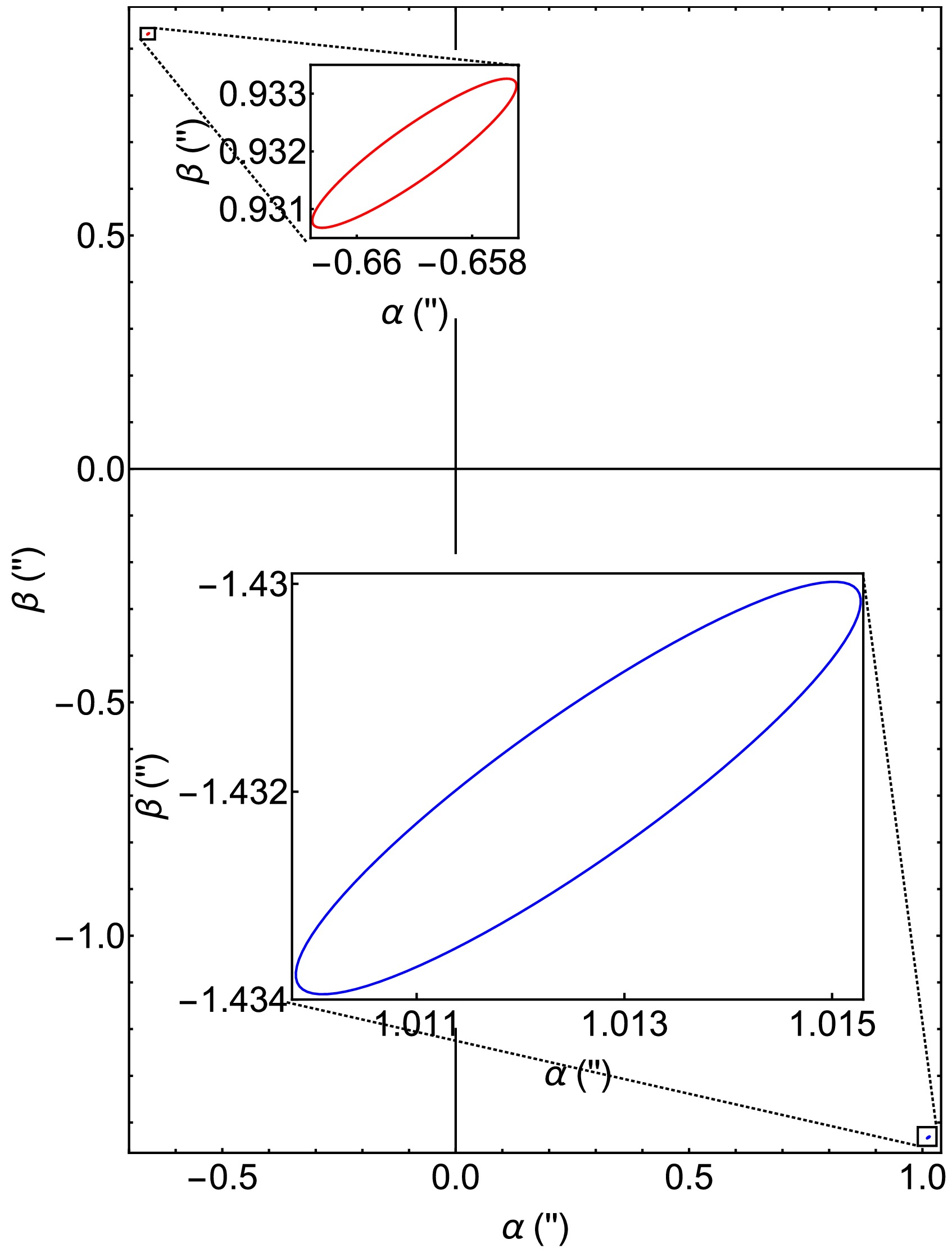
Figure 10. (color online) Apparent angles
(α,β) of the two images of a star with twice the Sun's size. We fixsrθ=+1,sl=+1,θs=π/4,δϕ=δθ=1′′,ˆa=1/2,rs=rd,v=1 . The red, blue, and black dashed lines are the two lensed images and the source shape without the presence of the lens (the insets are the magnified images).δη′=δη+Rrssinσ+O(Rrs)2,σ∈[0,2π).

(67) Substituting this into Eq. (51) and to the first order of
R/rs , the boundaries of the two images now have apparent angles(α′S,±,β′S,±) withα′S,±=αS,±+R2(rd+rs)(sgn(δϕ)∓1ζ)sinσ≡αS,±+δα±,σ∈[0,2π)

(68) where
αS,± is in Eq. (51) andζ in Eq. (52). The last term is the small variationδα± of the apparent angle in theα direction of the images. Similarly, the extension of the images in theβ direction isδβ±=RcosσrsαS,±δη.

(69) Equations (68) and (69) clearly demonstrate that the images on the celestial sphere have elliptic shapes with
δα± andδβ± being the semi-minor and semi-major axes, respectively, with the semi-minor axis aligned with the image-lens axis. The eccentricity of these ellipses aree±=|δβ±/cosσ|−|δα±/sinσ||δβ±/cosσ|+|δαS,±/sinσ|=ζ−1ζ+1.

(70) The corresponding magnifications of the images are the ratio between the angular size of the images and the original source
μ±=|πδαS,±/sinσ⋅δβ±/cosσπR2/(rs+rd)2|=±14(1±sgn(δϕ)1ζ)(1±sgn(δϕ)ζ).

(71) We can check that this agrees with the magnification (58) for images of the source at
δη .In Fig. 10, we show the image locations of a star with twice the size of our Sun and located at
rs=100′′rd andδθ=δϕ=1′′ . We observe that they do take the elliptic shape, and we have checked that their eccentricity and magnifications match exactly the values specified by Eqs. (70) and (71). -
Kerr BH spacetime is considered the most important BH in astronomy, whereas SMBH Sgr A* is currently one of the best confirmed BH candidates. Even being so close to us, Sgr A* still has many properties not well-constrained, including its spin orientation against our line-of-sight.
However, if the images of a source that is well aligned with the detector-lens axis are observed, then we might attempt to constrain the inclination of the spin, which is given by
θi=π/2−θs in this case. Among input parameters{M,a,θs,rs,rd,δθ,δϕ,v} , parametersM,ˆa , andθs are associated with the BH itself. Parametersrs,δθ , andδϕ are associated with the source andrd,v are associated with the detector and test particles, respectively. Generally, parametersM,rd can be obtained through other means and we can setv=1 for photons.δθ,δϕ generally cannot be measured, whereasrs can occasionally be deduced from the spectrum redshift if the source is a far-away galaxy but would be more difficult to measure for a typical star in the Galaxy. The spin of Sgr A* has been measured although not tightly [50]; therefore, in this paper, we primarily attempt to constrain its orientation against the line-of-slight.We assume that for a GL scenario by a Kerr BH, we can observe either the angle
σ between the line connecting the two images and the projection ofˆa on the celestial sphere, i.e.,σ=arctan(β±/α±),

(72) or the time delay
Δ2t± between the two images. Each of these two quantities enable us to solveθs and consequently the inclinationθi . We have listed a few typical values of the observedσ orΔ2t± and the deducedθi in Table 1. We observe thatθi depend onσ andΔ2t± very sensitively and therefore can be well constrained by them.Δ2t± /s

θi /rad

σ /rad

θi /rad

0.2 1.31 0.05 0.67 0.3 1.17 0.10 1.17 0.4 1.02 0.15 1.31 0.5 0.86 0.20 1.38 0.6 0.67 0.25 1.42 Table 1. Deduction of BH spin inclination
θi=π/2−θs fromΔ2t orσ . Columns 1 and 3 are assumed measurements and columns 2 and 4 are solvedθi . We fixδθ=1′′,δϕ=10−5′′, rs=rs39,v=1,ˆa=0.7 . -
This work considers the deflections and GL of both null signals and massive particles in the off-equatorial plane in Kerr spacetime in the WDL. The deflection angles are computed using the perturbative method resulting in power series expansions of
M/r0 andr0/rs,d , with the coefficients being functions of the spacetime parameter and the trigonometric function of the extreme valuesθe along the trajectories. Moreover, the finite distance effect of the source and detector is considered in these deflections. This enables us to establish a set of exact GL equations, from which we can solve the desired(r0,θe) , enabling the test particle from a source with deviation anglesδθ andδϕ to reach the detector.Using the exact formula for the apparent angles derived for the off-equatorial plane test particles, we studied the effect of various parameters, including source deviation angles
δθ andδϕ and spacetime spinˆa and its orientationθs , on the angular locations of the images on the celestial sphere and their magnifications. Generally, two trajectories that will reach the detector exist. For given values ofδθ andδϕ , two critical values ofˆac at which the two test particles intersect the positive and negativeˆz directions, respectively, always exist. Generally, whenδθ orδϕ is large, the effect ofˆa (for the Kerr BHˆa≤1 ) becomes subdominant; therefore, the GL is approximately the same as that in Schwarzschild spacetime (but in the off-equatorial plane). However, in other cases,ˆa will affect the quadrant in which the images appear and the magnification of these images.We also obtained the time delays between the two images. We found that the time delay generally depends on spacetime spin
a very sensitively even when deviation anglesδθ andδϕ are not very small. Therefore, it can be used as an effective tool to constraina , as was demonstrated in an equatorial case [14].We used these results to study the image of a transiting source behind the lens and the image shape and size of a spherical source, and we used the observables to deduce properties of the BH and its orientation.
A few points must be mentioned here. First, although this work primarily studies the BH spacetime with
|a|≤M , it is not restricted to this range. Therefore, the method and results can be applied to the naked singularity case. Second, from the mathematical perspective, the perturbation method should be generalizable to the deflection and GL in the off-equatorial plane of other axisymmetric spacetime. We will report the findings along this direction in a follow-up work. -
In this appendix, we show that the integrals of the forms (22) and (23) can always be determined and the results are elementary functions.
For the integral (22), multiplying the numerator and denominator of the integrand by
(1−p)i−1 , the integral is transformed to the sum of integrals of the form of the left-hand side of the following equation:∫ps,d1pkdp(1−p2)i−1/2=−pk−1(2i+k−4)(1−p2)i−3/2|ps,d1+k−12i+k−4∫ps,d1pk−2dp(1−p2)i−1/2,(k+1,i=1,2,⋯)

(A1) where the integration is performed by parts. Note that, superficially, the first term on the right-hand side might diverge when
p approaches1 . However, all these divergences will cancel when substituting these results into Eq. (22) because this is an artifact introduced when multiplying its integrand denominator by(1−p)i−1 . The recursion relation (A1) enables us to lower the order of the numerator by 2. Finally, for the lowest two ordersk=0,1 cases, we have∫ps,d1dp(1−p2)i−1/2=i−2∑k=0Cki−22k+1p2k+1(1−p2)i+1/2|ps,d1,

(A2) ∫ps,d1pdp(1−p2)i−1/2=−1(2i−3)(1−p2)i−3/2|ps,d1.

(A3) From the above relations, we observe that the result of integration (22) is a sum of terms such as
pm/(1−p2)n−1/2(m,n=1,2,⋯) , which are elementary functions.For integral (23), using a further change of variable
x=c/ce , after integration by parts and simplification, it becomes∫1cs,d/cex2n√1−x2dx=−x2n−1√1−x22n|1cs,d/ce+2n−12n∫1cs,d/cex2n−2√1−x2dx,(n=1,2,⋯).

(A4) Using this recursion relation and the lowest order integral
∫1cs,d/ce1√1−x2dx=sin−1x|1cs,d/ce,

(A5) we observe that (23) can also be completely integrated and the result is a sum of elementary functions.
-
In this appendix, we present two approaches for the derivation of
cos(θd) in terms of other kinematic parameters. The resultant Eq. (27) will act as one of the two GL equations from whichθe andr0 can be solved. The first approach is the Jacobian elliptic function method, which directly solves Eq. (11) forcosθd . The second approach uses the method of undetermined coefficients.For the first method, inspecting Eqs. (6) and (7) and focusing on their dependence on
c andr respectively, we can factor them asΘ(c)=(c2m−c2)(B0c2+B1),

(B1) R(r)=(E2−m2)[(r−r0)(r−r1)(r−r2)(r−r3)],

(B2) where
ce andr0,r1,r2,r3 are the roots ofΘ(c)=0 andR(r)=0 , respectively, and we order them asr0>r1>r2>r3 . CoefficientsB0 andB1 areB0=a2v2E2,B1=v2r20E2+2Mr0E2[Σ(r0,θe)+a2s2e(1+v2)]Σ(r0,θe)−2Mr0+4aMser0E2(Σ(r0,θe)−2Mr0)2(2aMr0se−sl√Δ(r0)Σ(r0,θe)[(Σ(r0,θe)−2Mr0)v2+2Mr0]).

With this re-writing, Eq. (9) can be solved to determine a solution of
cos(θ) as a function ofr cos(θ)=cecn(F(r)+C|B0c2mB0c2m+B1),

(B3) where
cn(x|y) is the Jacobian elliptic function,C is the integral constant, andF(r)=2(B0c2m+B1)(E2−m2)√(r0−r2)(r1−r3)×F1[sin−1(√(r1−r3)(r−r0)(r0−r3)(r−r1))|(r1−r2)(r0−r3)(r0−r2)(r1−r3)],

where
F1(x|y) is the elliptic integral of the first kind.To fix constant
C , we use boundary conditionθ(r=rs)=θs to determineC=∓[F(rs)−sr,θcn−1(csce|B0c2mB0c2m+B1)]

(B4) where the
− and+ signs in∓ correspond to the branch of trajectory fromrs tor0 and fromr0 tord , respectively. Substituting Eq. (B4) andr=rd into solution (B3) and expanding the result in terms of smallM/r0 , we obtain series (27).In the second method to determine the relation between
cd andr0 , we start by assuming thatcd takes a series form as in Eq. (27) and then use the method of undetermined coefficients to determine thesehi values.Substituting this series form into the right-hand side of Eq. (24) and then recollecting the series according to the power of
(M/r0) , we obtain∞∑i=1Fr,i(ps,pd)(Mr0)i=∞∑i=1Fθ,i(cs,cd,ce)(Mr0)i=∞∑i=1F′θ,i(cs,ce)(Mr0)i,

(B5) where the first few
F′θ,i are listed asF′θ,1=1√E2−m2[tan−1(h0cs√c2e−h20c2s)+sin−1(csce)srθπ],

(B6) F′θ,2=−h1cs(E2−m2)(E2−m2)3/2√c2e−h20u2s+E2(E2−m2)3/2⋅[tan−1(h0cs√c2e−h20c2s)+srθsin−1(csce)π].

(B7) Coefficients
hi here can be fixed by comparing with the left-hand side of Eq. (24) for the coefficient of(M/r0)n order by order, i.e.,Fr,i(ps,pd)=F′θ,i(cs,ce)for i=1,2,3....

(B8) Fortunately, this set of systems can be solved iteratively because
hi always starts to appear fromF′θ,i+1 and the equation system is sufficiently simple. The result of the solutions tohi are exactly Eq. (28c). -
First, we denote the four-velocity of the test particle and a direction between which we seek to measure the angle as
vμ andkμ , respectively; thus, we havevμ=(˙t,˙r,˙θ,˙ϕ).

(C1) For
kμ , we have three natural choices: directionsˆrd,ˆθd , andˆϕd , which are the spacelike directions of tetradeμ(a) associated with a static observer with four-velocityuμ eμ(1)=ˆrd=(0,ΔdΣd,0,0),

(C2) eμ(2)=ˆθs=(0,0,1Σd,0),

(C3) eμ(3)=ˆϕs=√Σd−2MrdΔdΣd(−2aMrds2dΣd−2Mrd,0,0,1sd),

(C4) eμ(0)=uμ=(ΣdΣd−2Mrd,0,0,0).

(C5) For such static observers, we can use projection operators
Pμν=gμν+uμuν and Qμν=uμuν,

(C6) to project each of the test particle or directional vectors
vμ,ˆrd,ˆθd,ˆϕd into a spacial part and a temporal part in the rest frame of the observer, respectively [51]:vμ=Pμνvν+Qμνvν,

(C7) kμ=Pμνkν+Qμνkν,k=ˆrd,ˆθd,ˆϕd.

(C8) Thus, the apparent angle of the signal against
ˆrd is given byγ=cos−1(ˉv,ˉˆrd)|ˉv||ˉˆrd|,whereˉXμ=PμνXν

(C9) and the angles between the signal and the
ˆrdˆθd plane and theˆrdˆϕd plane are respectivelyα=sin−1(ˉv,ˉˆϕd)|ˉv||ˉˆrd|,

(C10) β=sin−1(ˉv,ˉˆθd)|ˉv||ˉˆθd|.

(C11) Substituting the Kerr metric, we can determine the expressions for these three angles as
α=sin−1L(Δd−a2s2d)+2aMErds2dsd√ΔdΣd(E2Σd−m2(Δd−a2s2d)),

(C12) β=sin−1srθ√Θ(cd)(Δd−a2s2d)sd√Σd[E2Σd−m2(Δd−a2s2d)],

(C13) γ=cos−1{[(aL−(a2+r2d)E)2−(K+m2r2d)Δd]ΔdΣd[E2Σd−m2(Δd−a2s2d)]×(Δd−a2s2d)}1/2.

(C14)
Off-equatorial deflections and gravitational lensing in Kerr spacetime and the effect of spin
- Received Date: 2024-11-01
- Available Online: 2025-03-15
Abstract: This paper investigates off-equatorial plane deflections and gravitational lensing of both null signals and massive particles in Kerr spacetime in the weak deflection limit, considering the finite distance effect of the source and detector. This is the effect caused by both the source and detector being located at finite distances from the lens although many researchers often use the deflection angle for infinite distances from sources and detectors. The deflection in both the





 Abstract
Abstract HTML
HTML Reference
Reference Related
Related PDF
PDF





















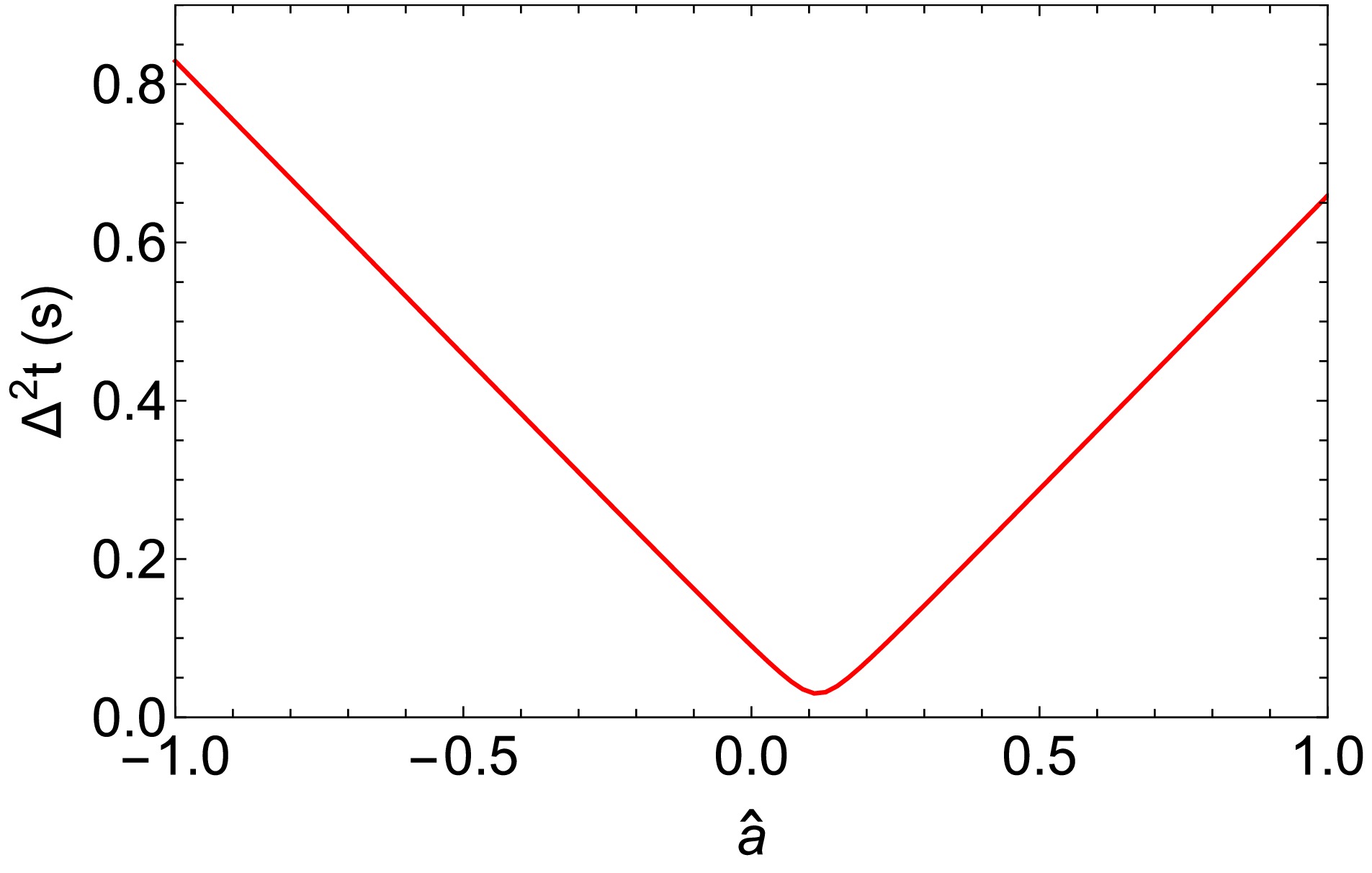



 DownLoad:
DownLoad: